Outside-the-box color pairings often give a kitchen its soul, and none feels fresher right now than the graphic dialogue between deep black and mood-lifting greens. Color forecasters consistently rank both hues among the most desirable for resale value and long-term style, noting that charcoal tones add sophistication while sages and emeralds ground the room in nature’s calm. By balancing light, texture, and finish, the combination can swing rustic, ultra-modern, or quietly minimalist without losing its bold attitude. Ready to explore twenty ways designers are mastering this palette? Let’s dive into kitchens that prove contrast is the new neutral.
1. Matte Black Cabinet Kitchen with Sage Green Walls
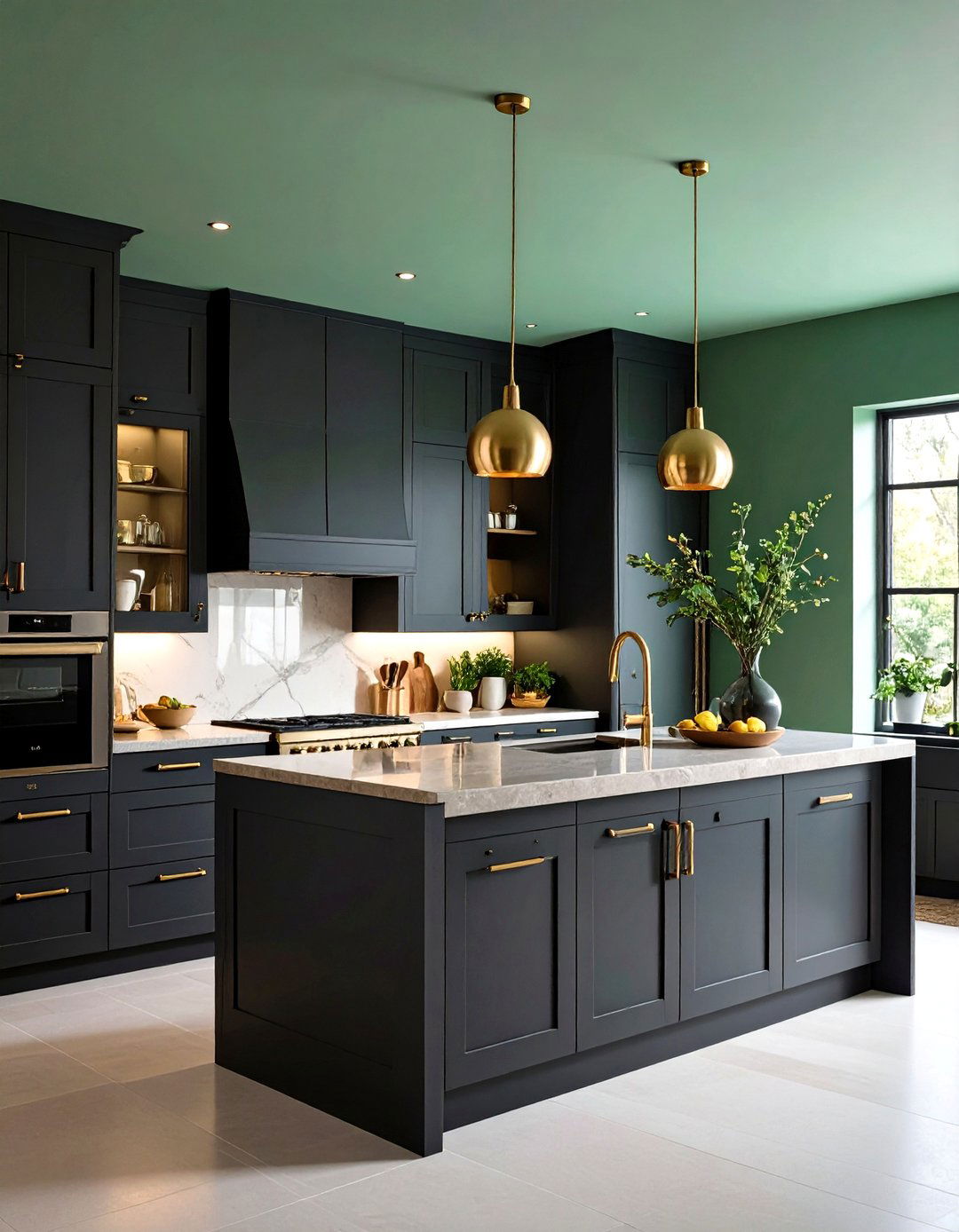
A soothing sage wall instantly softens the strong geometry of flat-panel matte black cabinets, creating harmony rather than stark contrast. Color analysts point out that sage connects homeowners to biophilic design principles, which subtly lower stress while cooking or gathering. Keep countertops pale quartz and introduce warm brass pulls to bridge the temperature gap between the hues. Under-cabinet lighting in a soft white will stop darker uppers from feeling heavy. If you’re cautious, start with a single accent wall first, then commit to full wraparound color after living with the shade for a week.
2. Forest Green Island Kitchen against Jet-Black Counters

Placing a rich forest-green island in the center of a black countertop perimeter flips the traditional light-island formula on its head and draws guests to the heart of the room. Designers praise this move for giving large kitchens a focal anchor without adding clutter. Finish the island in durable lacquer for subtle sheen, then echo the tone in bar-stool upholstery or pendant cords. To keep the palette intentional, repeat thin lines of green—think enamel cookware or framed herb prints—at eye level. A waterfall slab in honed black marble ties everything together with sculptural elegance.
3. Charcoal-Framed and Olive Shaker Kitchen Design
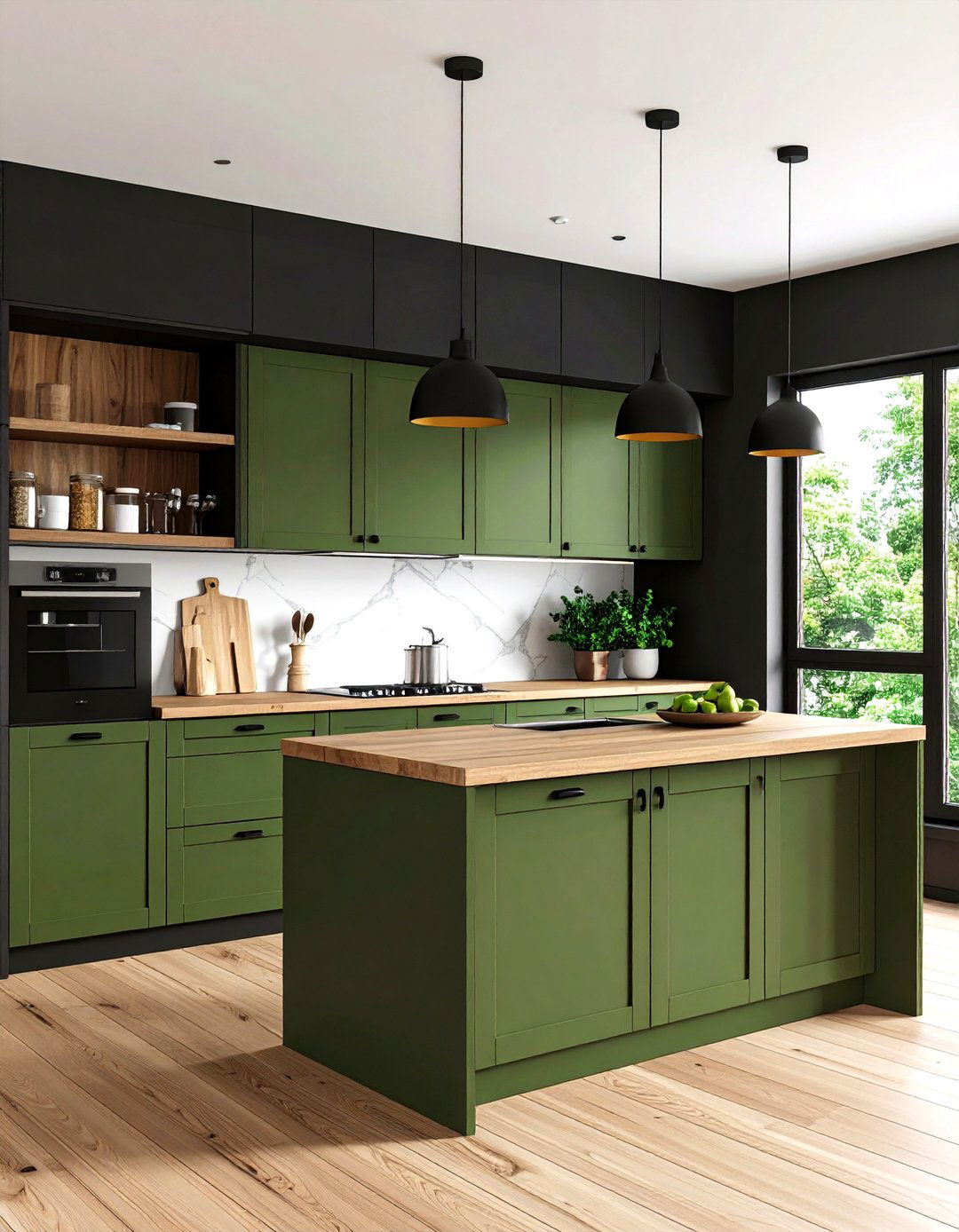
Mixing charcoal face frames with recessed olive shaker doors delivers a heritage look that still reads modern. Paint experts list olive among the top “new neutrals” because it hides scuffs yet feels organic. Set the pair atop light oak floors so shadows don’t steal brightness. For backsplash, handmade white zellige tile introduces reflection that stops the darker frames from absorbing all the light. Simple matte black cup pulls reinforce the outline, while open oak shelves keep heavy color from climbing every wall. Try a matte hard-wax finish on olive fronts for fingerprint resistance.
4. Emerald Tile Splash in Graphite Kitchen
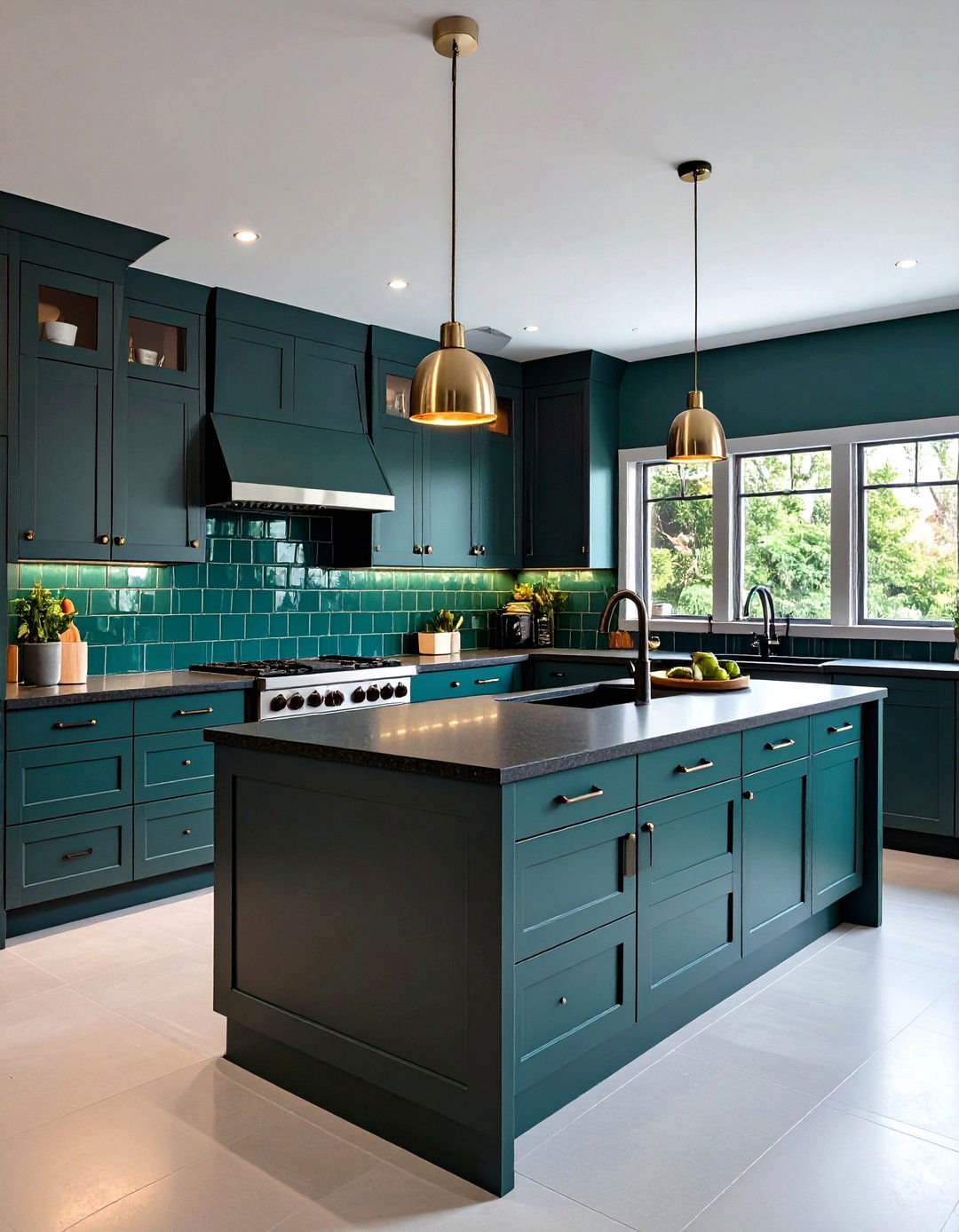
When walls and cabinets lean graphite, a single plane of emerald green tile—glossy subway or geometric Moroccan—becomes pure jewelry. Tile specialists note that jewel greens enliven monotone spaces by bouncing daylight back into the room. Choose a contrasting grout, such as dove gray, to trace each piece and echo stainless appliances. Because emerald already feels luxe, lesser materials risk looking flat; upgrade counters to leathered soapstone or black quartzite for depth. Complete the look with slim LED shelf lighting that lets the tile sparkle after sunset.
5. Black Marble-Topped Kitchen with Pistachio Shelving
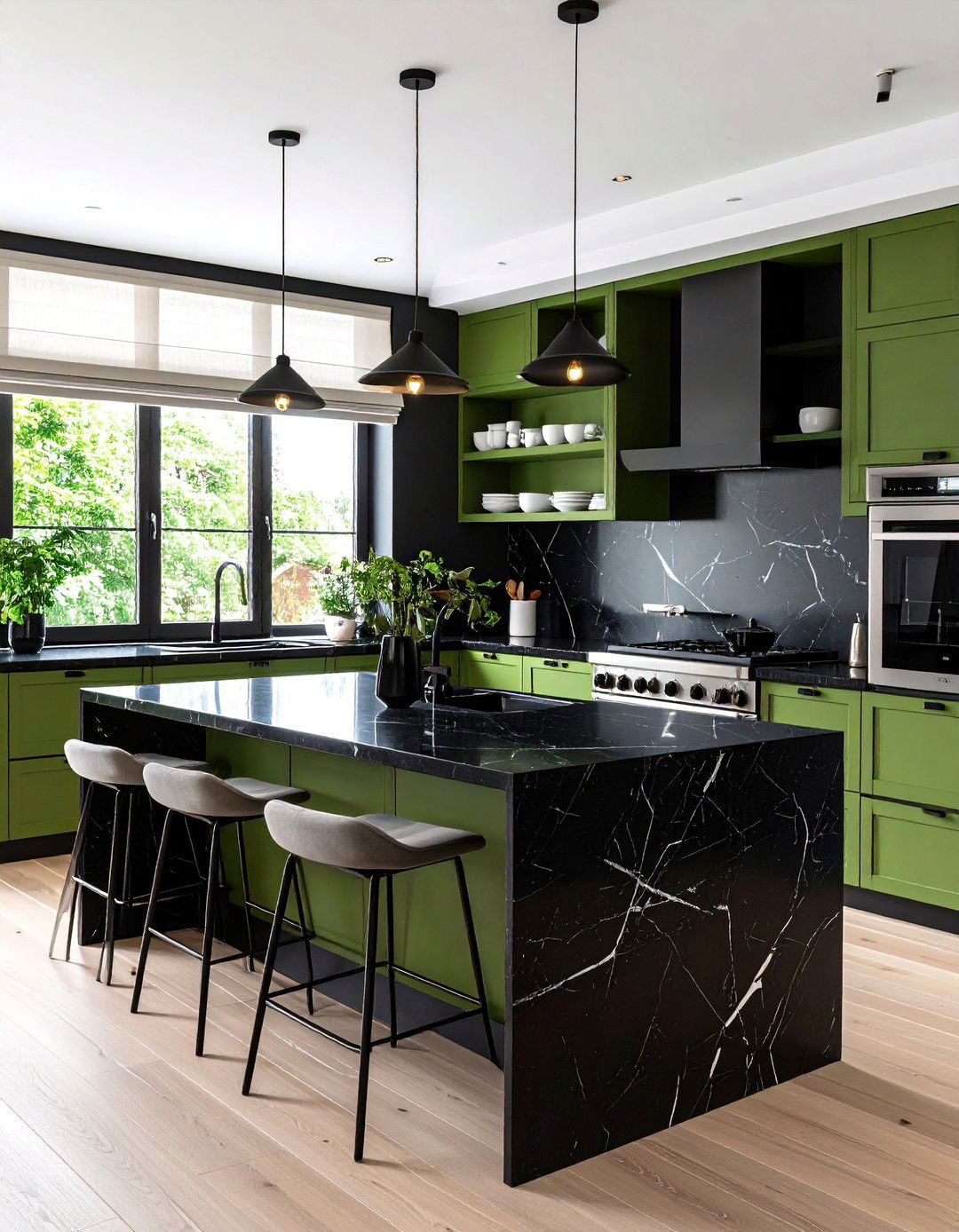
Subtler than sage yet livelier than mint, pistachio shelving pops against honed black marble worktops. Decor trend surveys reveal that pastel-adjacent greens increase perceived airiness, making them perfect for small galley kitchens. Float shelves on hidden brackets so the color appears to hover, and limit styling to useful items—think white everyday dishes or clear spice jars—for a tidy gradient effect. Because the marble veining provides movement, keep hardware minimal. A compact matte-black faucet melds into the slab, and an ivory roman shade balances all the cooler tones with a touch of warmth.
6. Two-Tone Kitchen: Green Lowers, Black Uppers
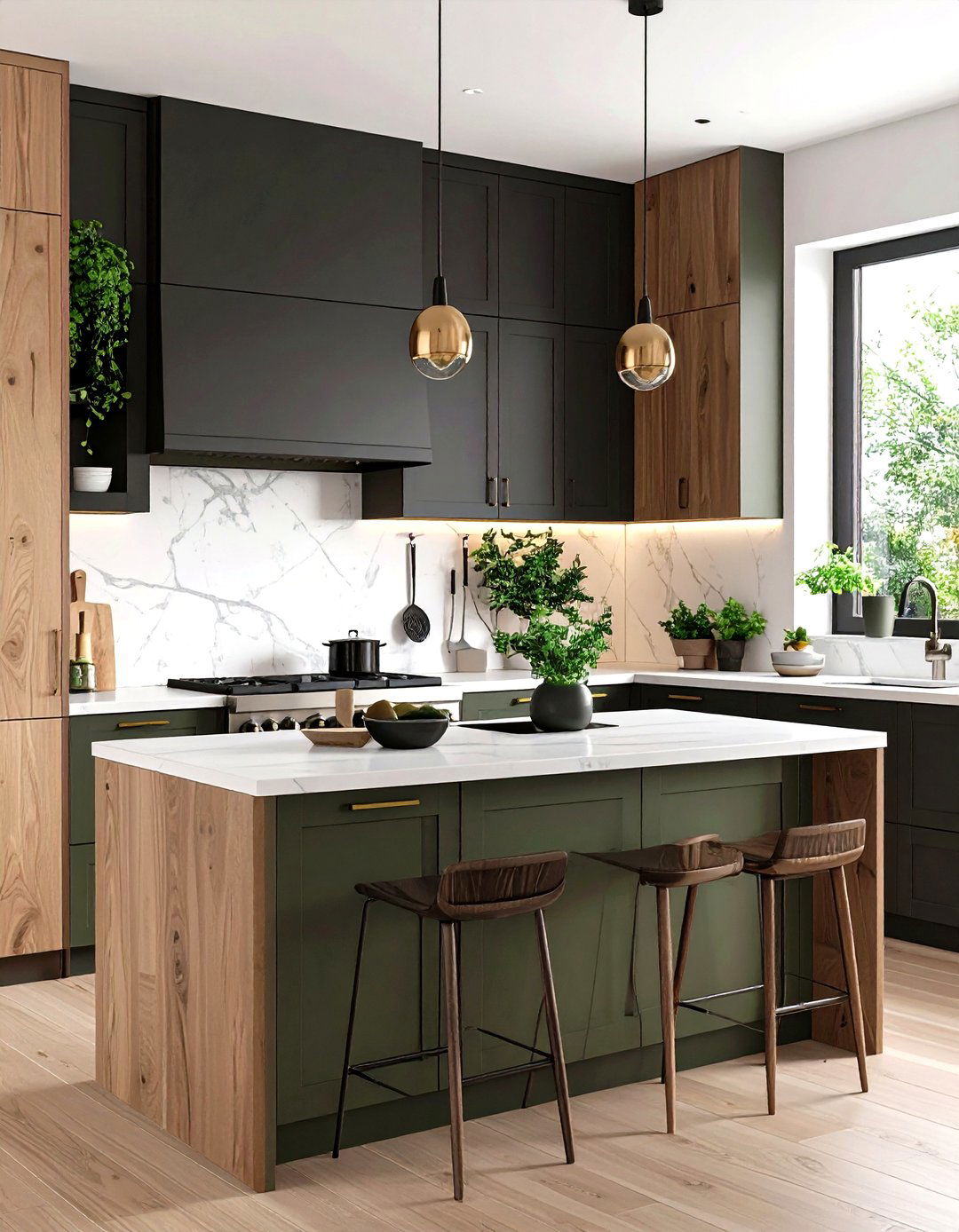
Swapping the usual light-above-dark arrangement keeps the eye grounded, which color psychologists say can make a lofty ceiling feel less cavernous. Paint lowers in dusty eucalyptus and uppers in rich ink; this reversal disguises inevitable spills at counter height while letting overhead cabinets recede visually. Mirror each hue in accessories—a green utensil crock, black mortar and pestle—to stitch the palette together. To further lighten the upper zone, install glass doors on a few black units or line interiors in maple veneer.
7. Ebony Range-Hood Kitchen with Chartreuse Accent Wall
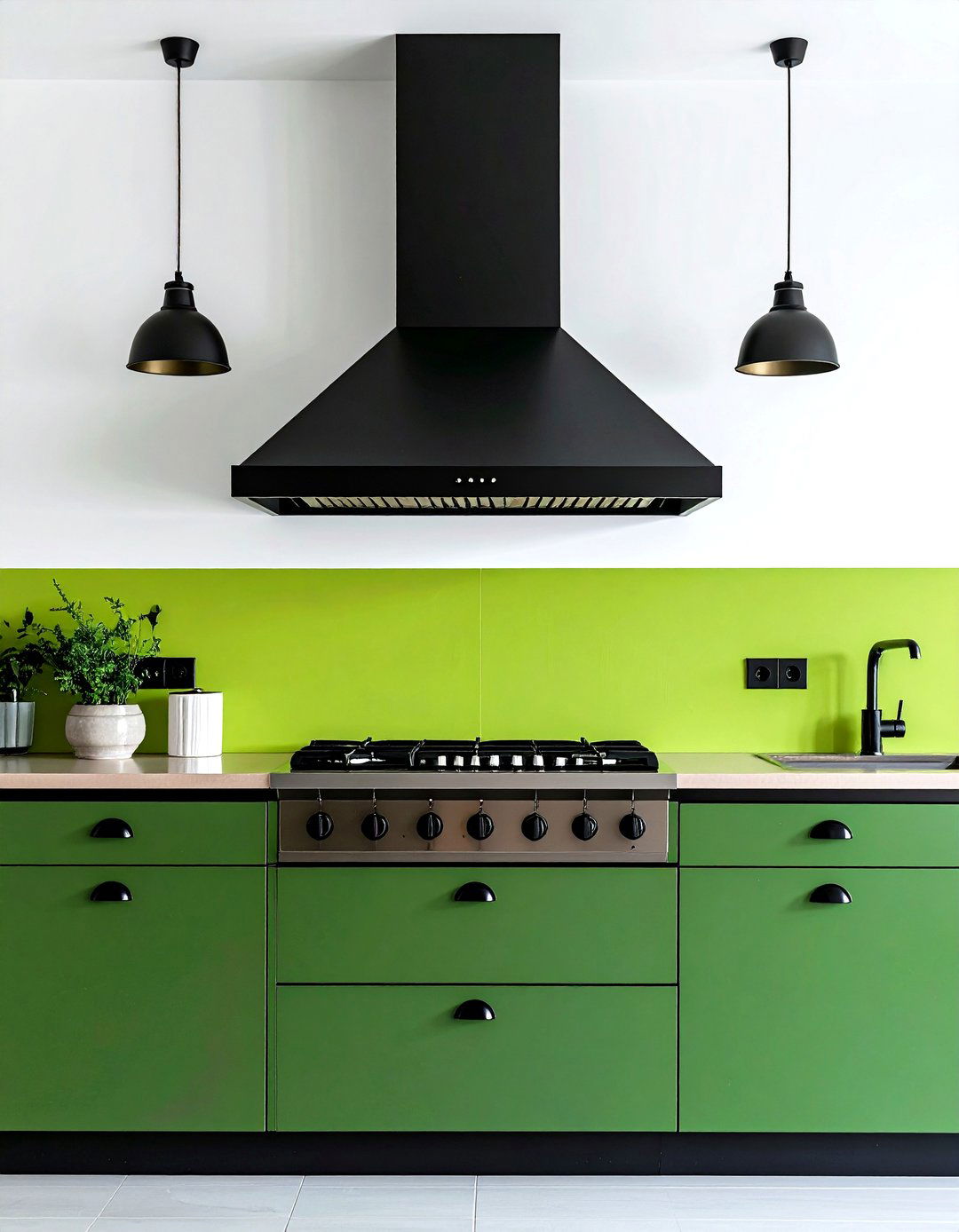
A statement hood in velvety black steel becomes art when framed by a single chartreuse wall stripe behind it. Trend watchers credit bold accent walls for helping homeowners commit to vivid greens without renovating every cabinet. Keep the remainder of the walls crisp white so the bright slice feels curated, not chaotic. Fit the hood with brushed black rivets to reinforce artisanal character, and repeat those rivets on drawer pulls for cohesion. If chartreuse feels too daring, apply it as limewash—a semi-transparent finish that can be toned down with extra coat of water-based sealer.
8. Glossy Black Appliance Kitchen Paired with Bottle-Green Larder
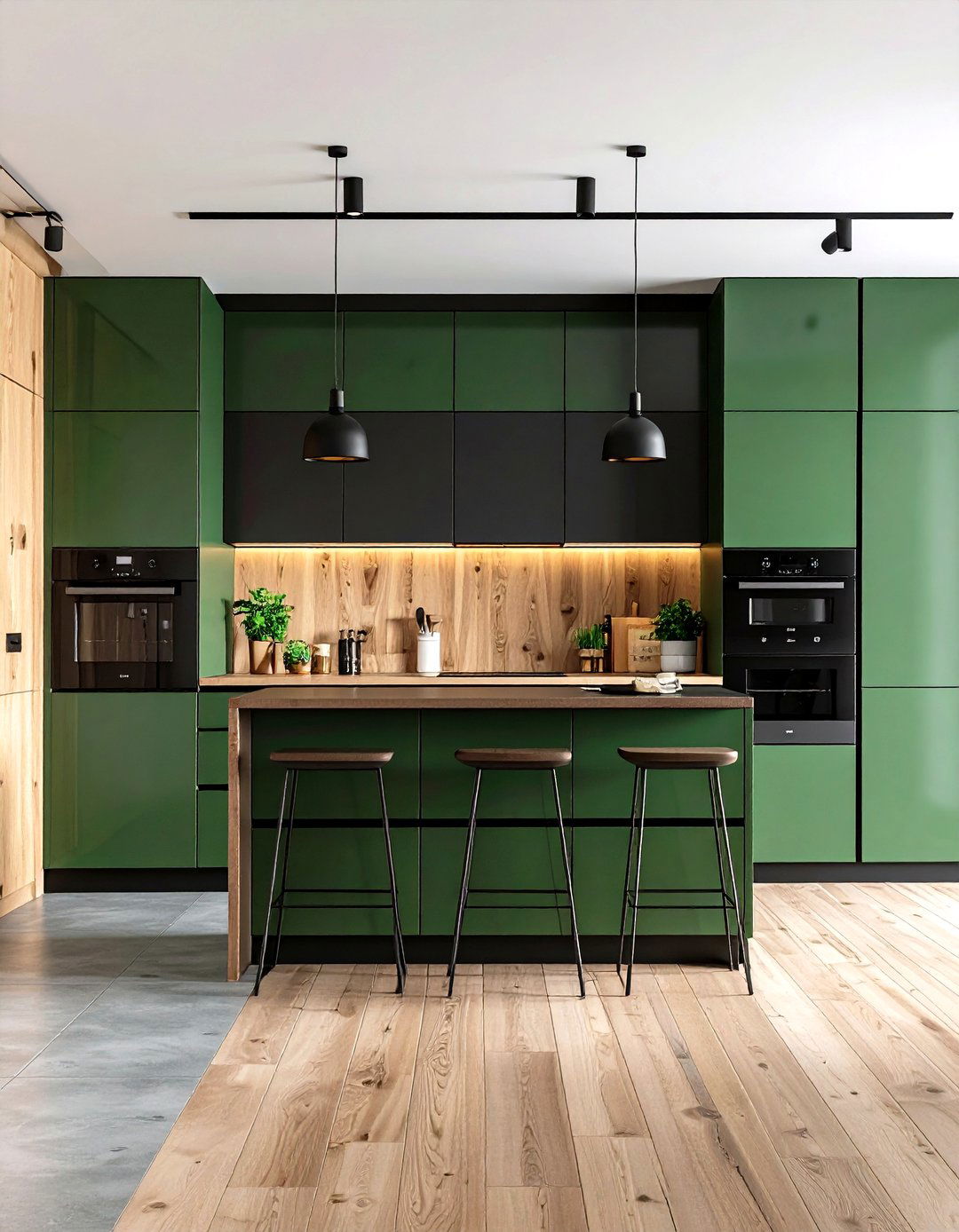
Integrated glossy black appliances practically vanish when placed inside floor-to-ceiling bottle-green pantry runs, leaving a seamless wall of color. Hardware manufacturers highlight that today’s matte black handles match appliance fronts perfectly, avoiding jarring finishes. To prevent a visual monolith, break up tall doors with a central niche lined in oak for everyday mugs. Because gloss surfaces amplify glare, balance them with matte or honed textures elsewhere—think concrete floor tile or suede-finish quartz. Task lighting inside the pantry ensures deep green interiors stay welcoming.
9. Mint Cabinet Kitchen with Matte Black Fixtures
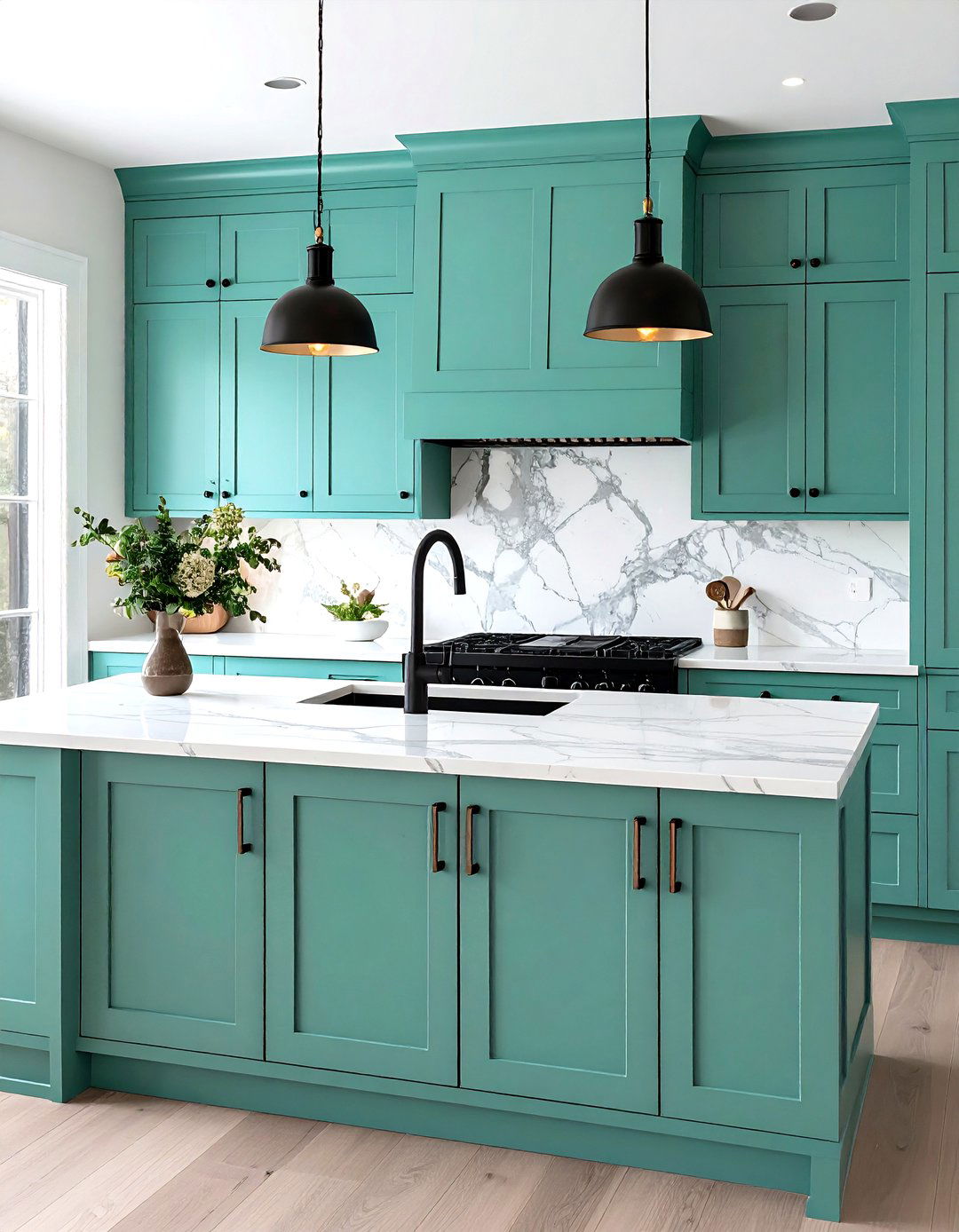
If you crave freshness, coat Shaker fronts in subtle mint and install black fixtures—pull-down faucet, T-bar handles, exposed conduit lighting—to punctuate the pastel. Design editors observe that black detailing sharpens paler greens, giving them a grown-up finish that white hardware cannot match. Keep counters light marble to echo mint’s cool undertone, and introduce one moody element—perhaps a black granite composite sink—to ground the scheme. Because mint can skew retro, integrate contemporary touches like handleless drawer channels or integrated knife blocks to avoid nostalgia overload.
10. Ink-Toned Pantry Kitchen Featuring Moss Interior

Painting a walk-in pantry door ink-black adds drama, but lining interior shelves in moss paint rewards anyone who opens it. Storage experts say contrasting cabinet interiors help users locate items faster while elevating an often-overlooked space. Continue moss onto the ceiling to wrap visitors in color, and switch harsh bulbs for warm LEDs that flatter both food and paint. Outside, a slim black rail ladder references vintage apothecaries and makes high shelves usable. This hidden punch of green lets cautious decorators keep the main cook zone monochrome while still enjoying the palette.
11. Terrazzo-Floored Black and Green Kitchen
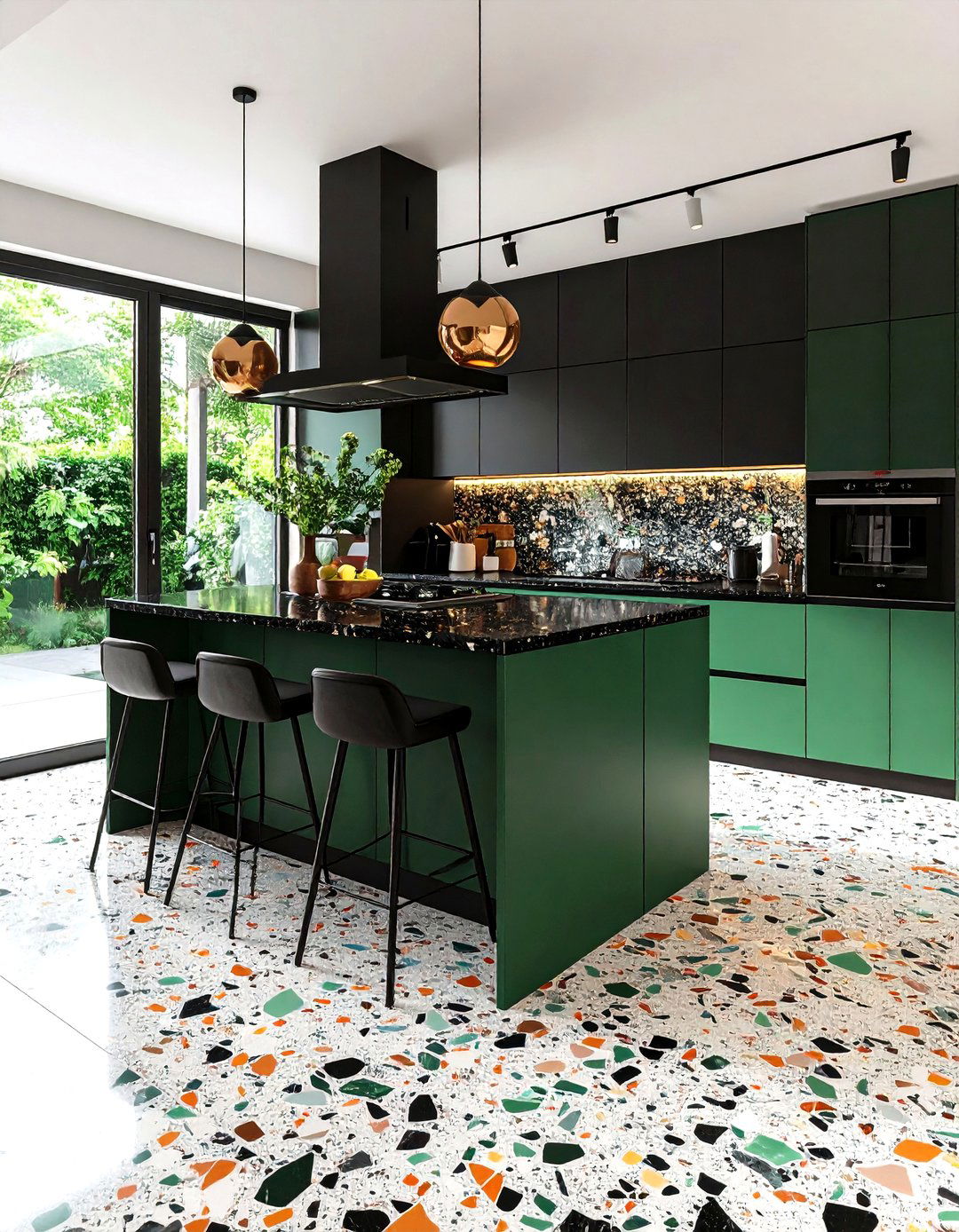
A multicolor terrazzo floor speckled with jade and charcoal chips ties every other element together, acting like a patterned rug you’ll never trip over. Sustainability-minded designers tout terrazzo’s recycled content and lifelong durability, qualities high on 2025 wish lists. To keep the backdrop quiet, select flat-panel black cabinetry and minimal upper storage so the floor sings. Pull a single green chip tone onto a low island or door fronts for intentional repetition. Finish with slimline black toe kicks that visually float the cabinets, preserving the terrazzo’s uninterrupted sweep.
12. Green Marble Slab Splash Kitchen with Black Hardware
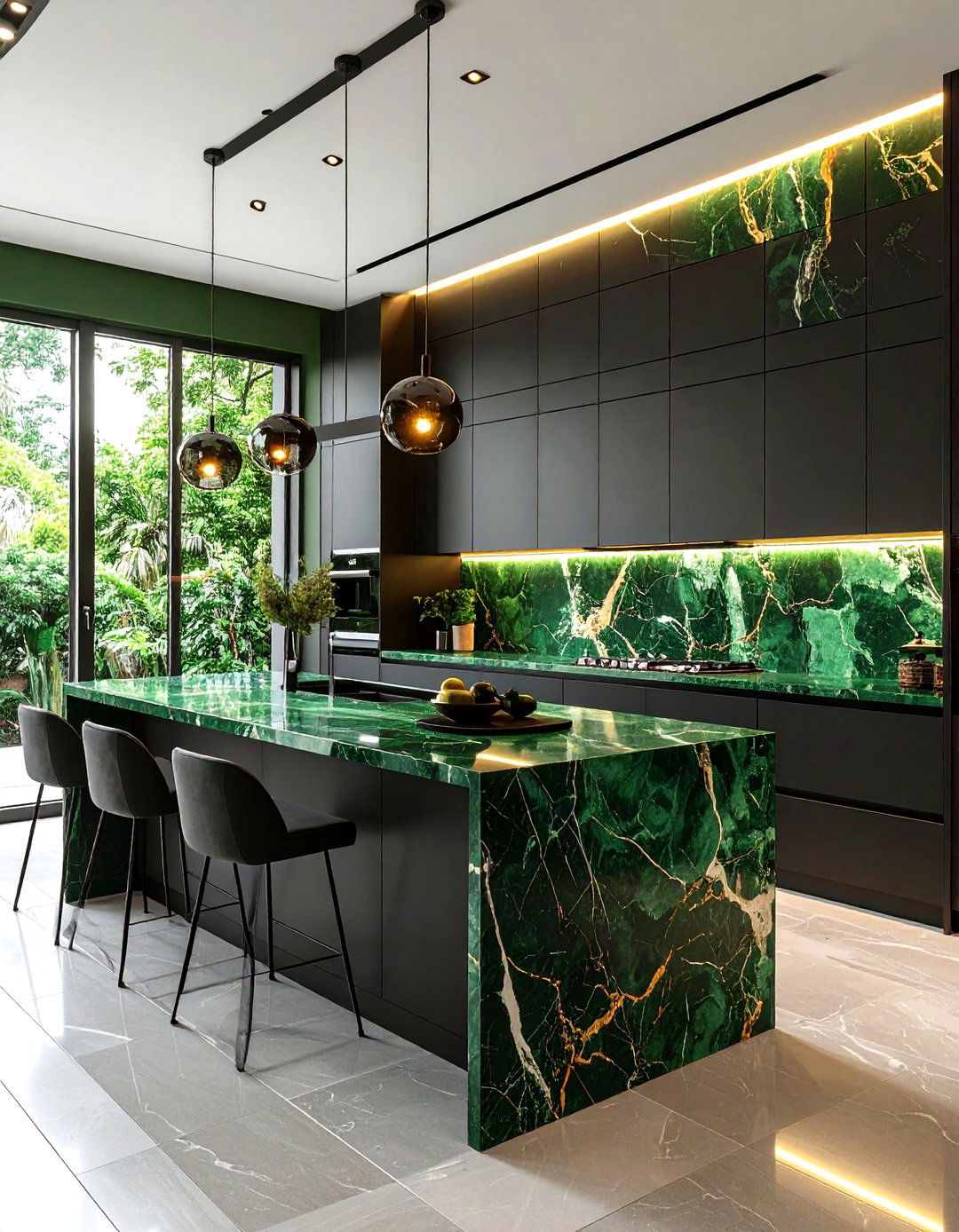
Green marble slabs—think Verde Alpi or Rajasthan Green—turn a simple L-shape into a gallery moment, especially when contrasted by understated black pulls. Material guides stress that a full-height slab reduces grout maintenance and amplifies natural veining into artwork. To highlight the stone, fit cabinets in low-sheen charcoal and illuminate the splash with angled under-cabinet LEDs. Seal marble yearly with food-safe impregnator to resist citrus etching. Because the stone already commands attention, choose app-controlled black plugs and switches for a clean, wire-free look.
13. Black-Framed Window Kitchen Overlooking Verdant Garden
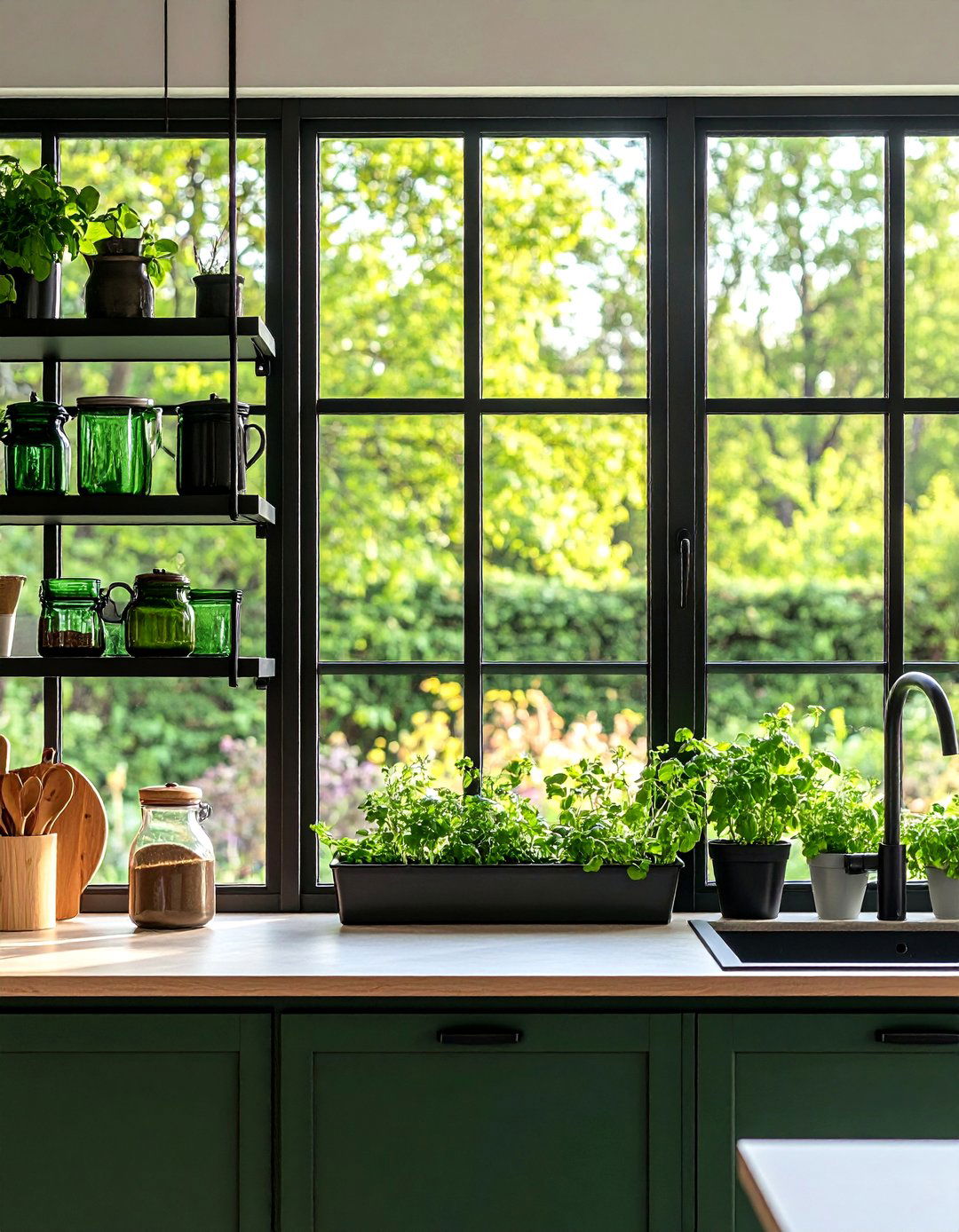
Large black steel frames deliver architectural weight, while the living greens outside echo any interior emerald accents for seamless indoor-outdoor flow. Architects note that dark window mullions draw the landscape forward, almost like matting around a painting. Inside, place a slimline herb trough across the sill so the palette jumps inside as well. To prevent a heavy “hole in the wall,” flank the window with open shelves painted the same black, each displaying green glassware. UV-blocking glazing protects plants and prevents darker counters from fading.
14. Glass-Front Black Cabinet Kitchen with Fern Lighting
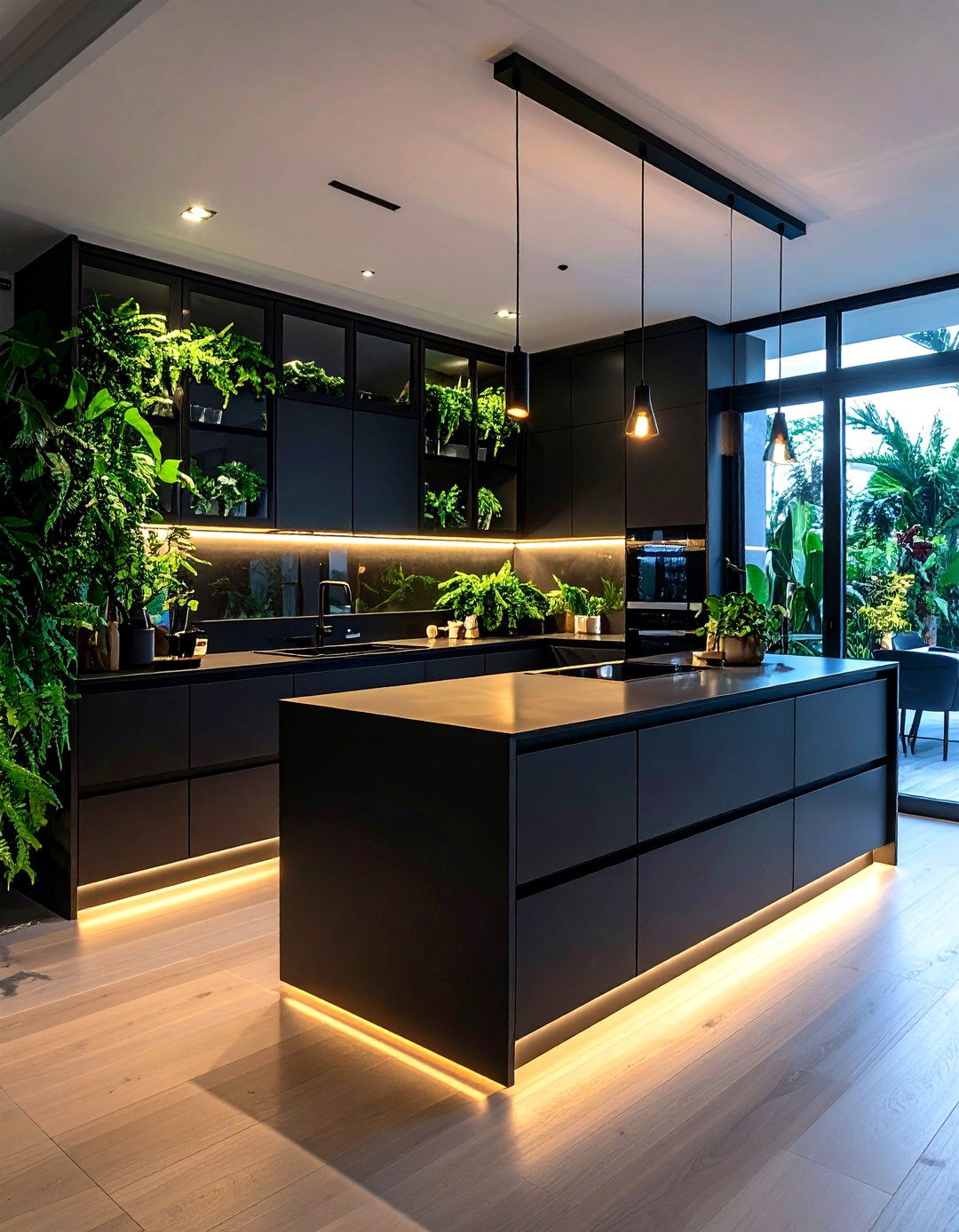
Swap solid black uppers for metal-framed glass doors and backlight the boxes with LED strips tuned to a soft fern hue. Lighting designers find that colored LEDs add ambiance without committing to painted surfaces—a plus for renters. Keep shelves orderly with clear decanters so the subtle green glow isn’t cluttered. Below, matte black lowers and dark walnut flooring ground the ethereal top. Tie the look together with a single green art print or trailing pothos vine cascading from the highest shelf.
15. Black Stained Ceiling Kitchen over Spruce Island
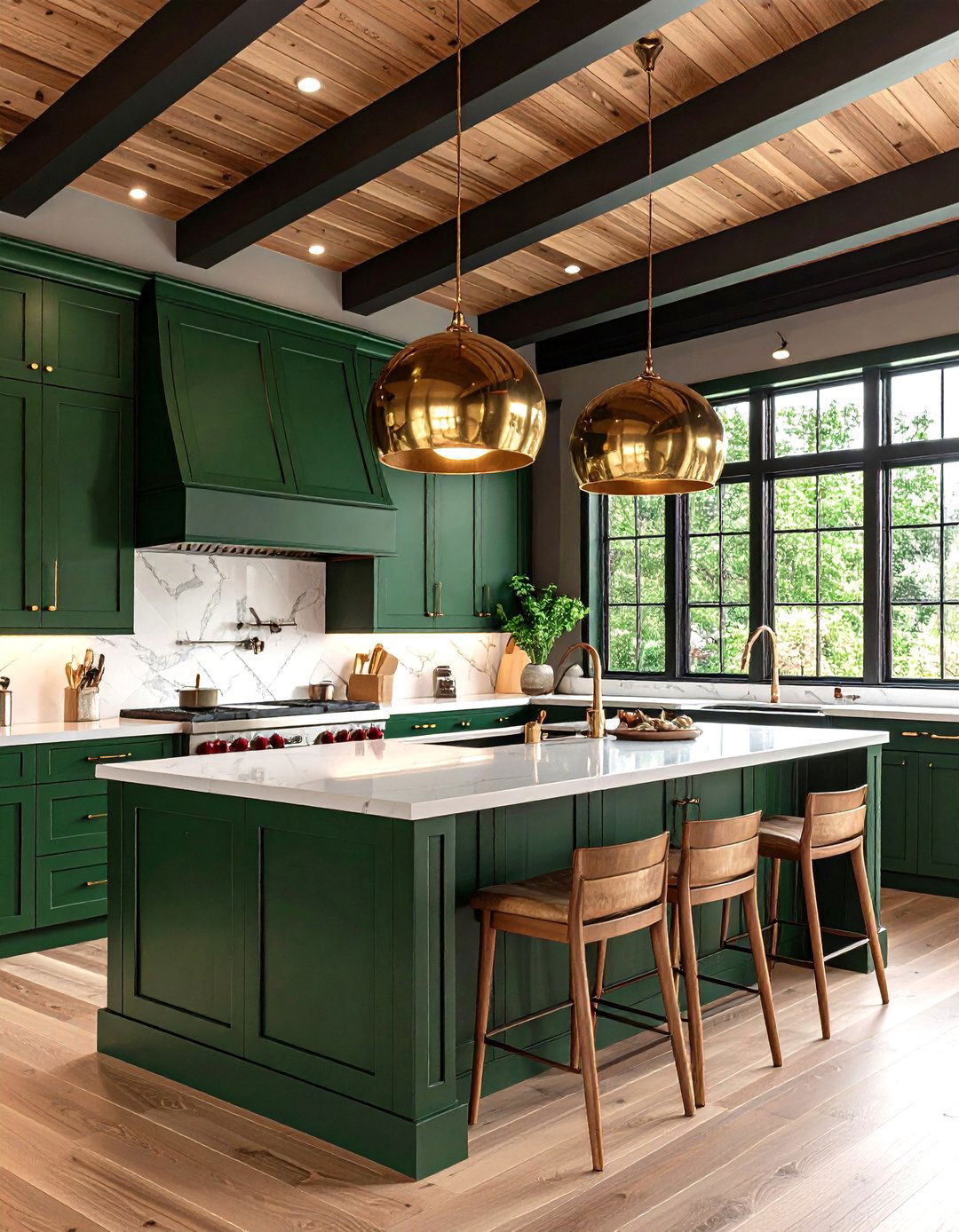
Staining tongue-and-groove ceiling planks ebony creates a cocoon that feels luxe, while a spruce-green island lifts the space back up. Home-value studies show that bold contrast ceilings distinguish listings in competitive markets. Since dark overhead surfaces can compress height, balance them with oversized pendants in brushed brass to reflect light downward. Select island paneling with vertical grooves to echo ceiling lines and carve a trio of shallow drawers for prep essentials. Finish with hard-wax oil for a natural, matte appearance that highlights wood grain.
16. Noir Concrete Counter Kitchen with Herb-Green Banquette
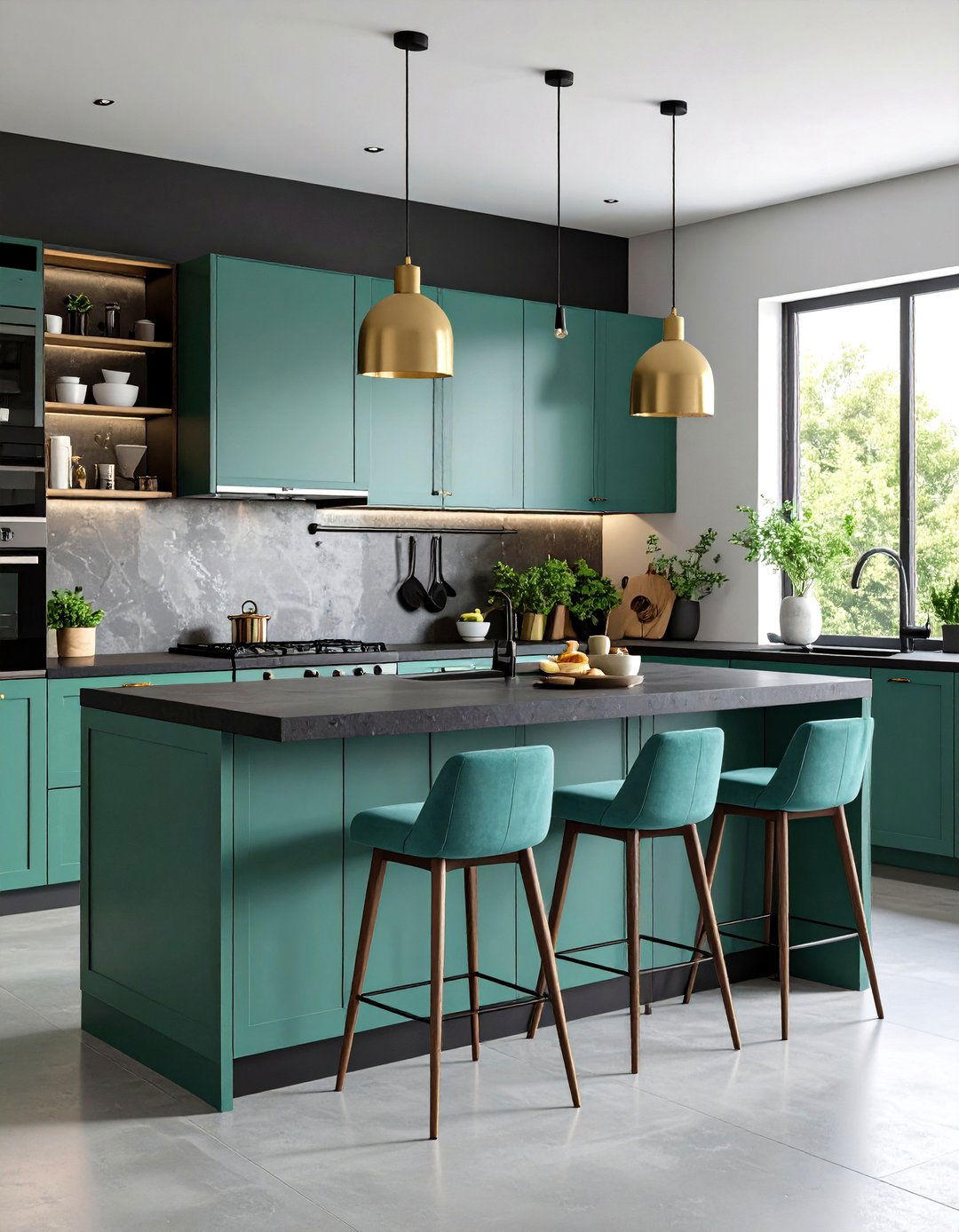
A poured-in-place concrete counter tinted black offers durability and architectural presence, while an L-shaped herb-green banquette converts unused corner footage into cozy seating. Color psychologists advise pairing hard industrial surfaces with soft upholstery to balance tactility and visual temperature. Opt for wipeable performance fabric and integrate under-seat drawers for seldom-used appliances. As concrete cures, it develops character marks; embrace them by sealing with satin polyurethane that celebrates variance. Accessorize the banquette with mixed-toned cushions—kelly, olive, and teal—for layered depth.
17. Hidden Lime Bar Nook in Tall Black Cabinet Kitchen
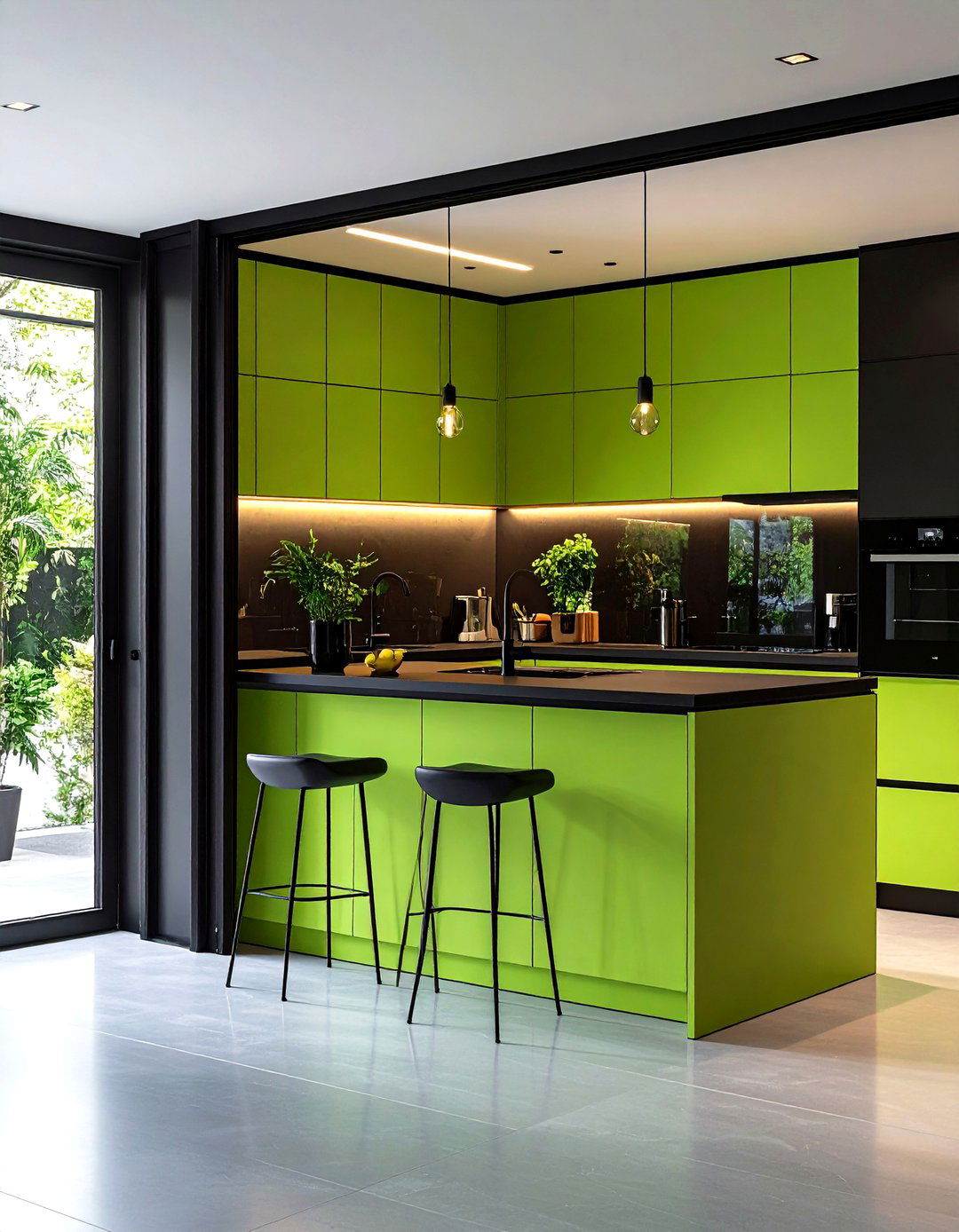
Concealing a lime-painted cocktail station behind black pocket doors adds an element of surprise that delights guests. Entertaining gurus say color-blocked nooks signal purposeful zoning and keep counters uncluttered. Equip the niche with mirrored backsplash to bounce the vivid hue and recessed puck lights for sparkle. Brass rails against lime walls corral glassware, while a slim fridge drawer below chills mixers. When closed, the sleek façade blends into the main cabinet run, proving that exuberant color doesn’t have to dominate the whole room.
18. Green Lacquer Door Kitchen with Black Mesh Accents
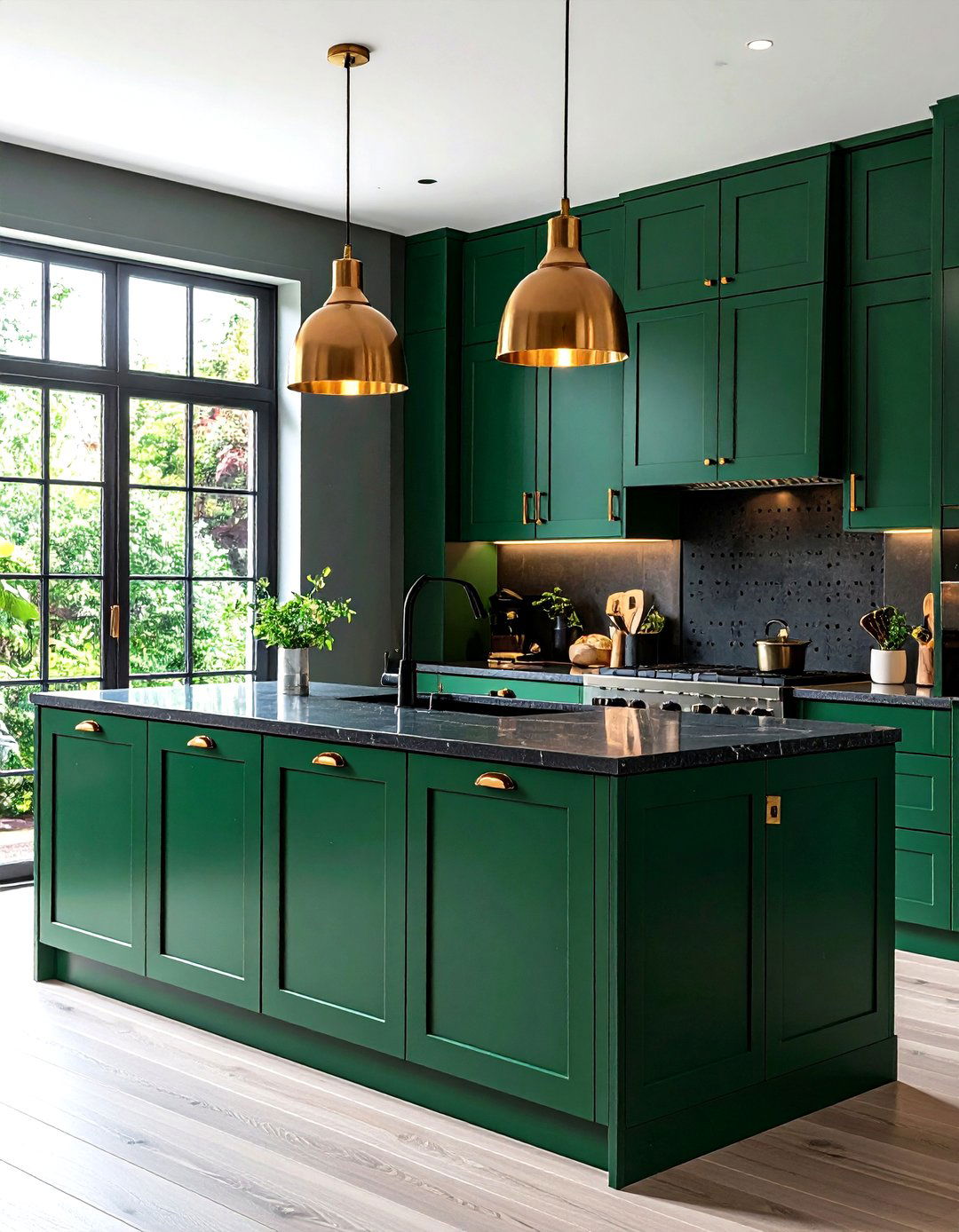
High-gloss emerald lacquer doors paired with black perforated-metal inserts lend a hybrid industrial-glam vibe designers predict will rise alongside open-plan loft conversions. Mesh allows equipment visibility and airflow—ideal for pantry or appliance garages—while reflecting light across the lacquer’s mirror finish. Mitigate fingerprints by specifying soft-close rails to avoid hard pulls. Because surfaces shine, mattify surrounding materials: opt for honed black basalt flooring and brushed black faucets. A single statement pendant in matte brass softens all the crisp edges.
19. Seaweed Beadboard Kitchen with Smoky Black Handles
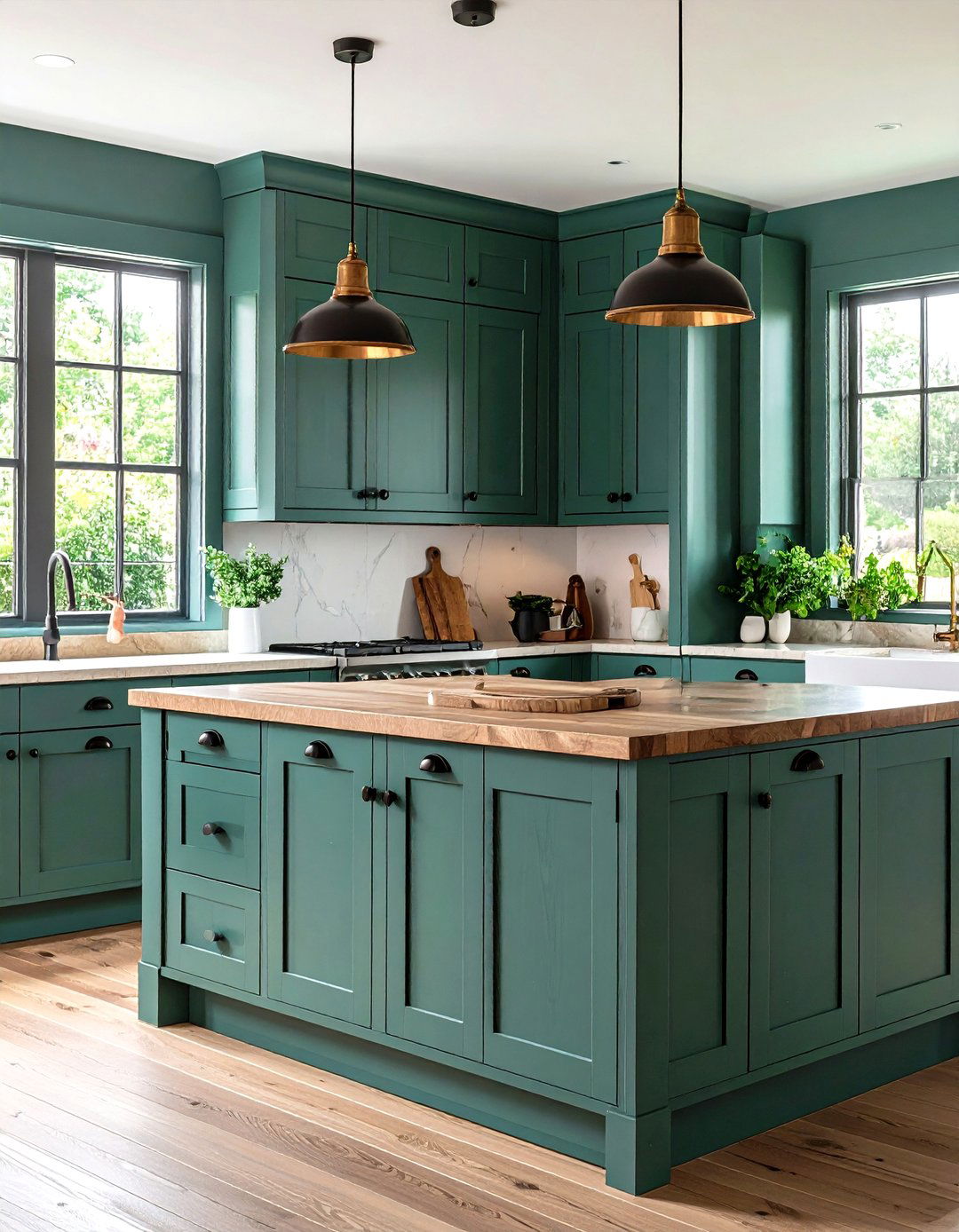
Vertical beadboard fronts painted seaweed green introduce cottage charm, yet smoky black mushroom knobs prevent the scheme from tipping quaint. Paint guides highlight mid-tone greens for bridging traditional millwork with contemporary color expectations. Break long runs with butcher-block prep stations that echo beadboard lines and add a natural accent. Above, expose white timber beams to maintain brightness. Finish the hood in the same beadboard to unify the envelope, and coat handles with a soft-touch finish for comfortable grip.
20. Gradient Mural Kitchen Blending Black into Green
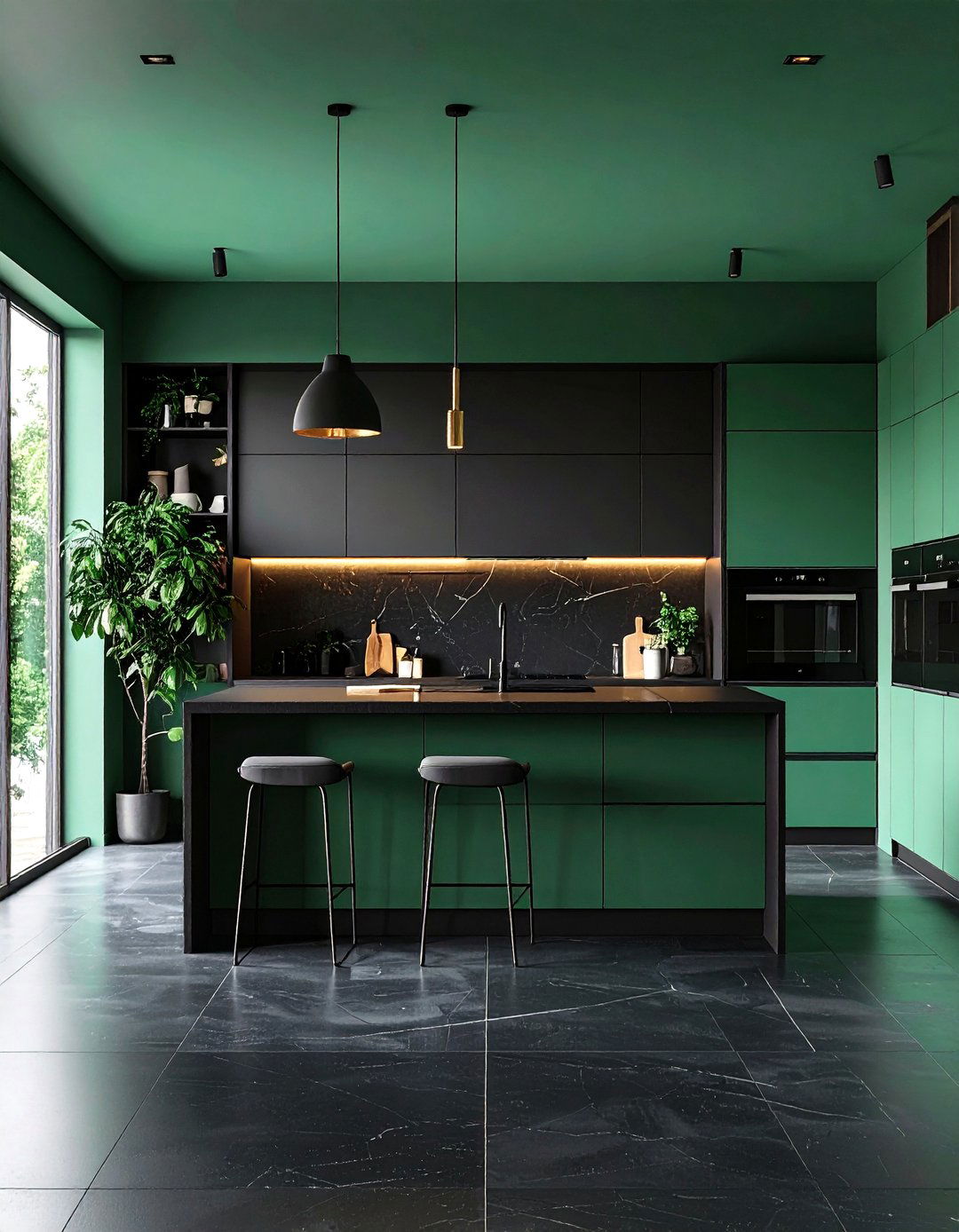
For the adventurous, commission a hand-painted ombré mural that fades from inky black near the floor to luminous jade near the ceiling. Forecasting reports cite ombré treatments as a rising alternative to flat accent walls, offering depth without physical texture. Protect the art with clear, matte polyurethane for scrub-ability. Keep cabinets neutral matte black so the wall remains hero. Echo the gradient in smallest details—linen tea towels that shift shade, a stack of plates arranged dark-to-light—to reinforce the concept subtly throughout daily routines.
Conclusion:
Pairing green’s restorative energy with black’s refined strength lets a kitchen strike that elusive balance between welcoming and sophisticated. Whether you lean toward gentle sage or daring emerald, each idea above proves the palette can flex across styles, layouts, and budgets while still appealing to future buyers. Focus on thoughtful contrasts—matte beside gloss, wood against stone, shadow framing light—and your black and green kitchen will feel timeless rather than trendy. Now, which combination speaks to the cook and host in you?


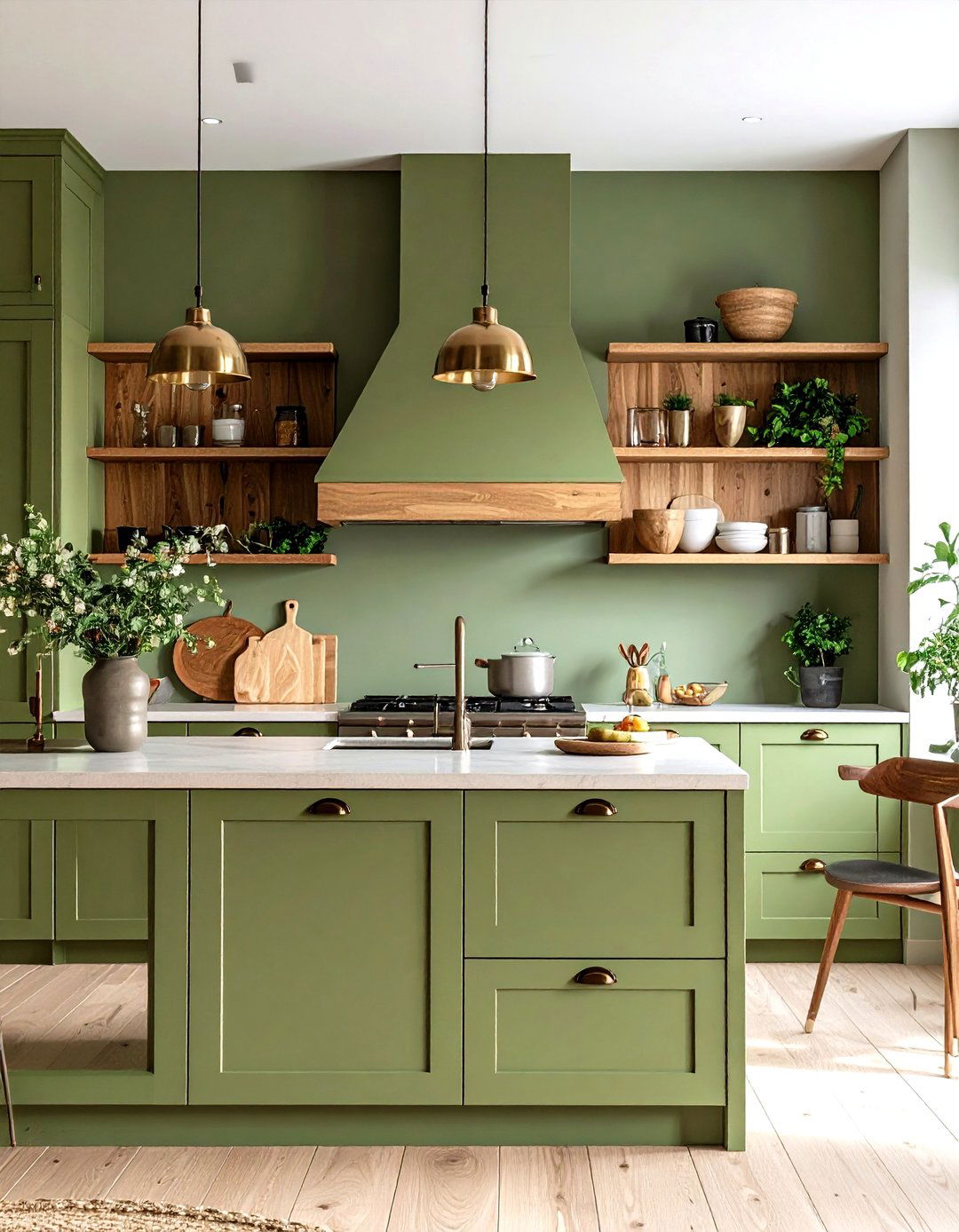
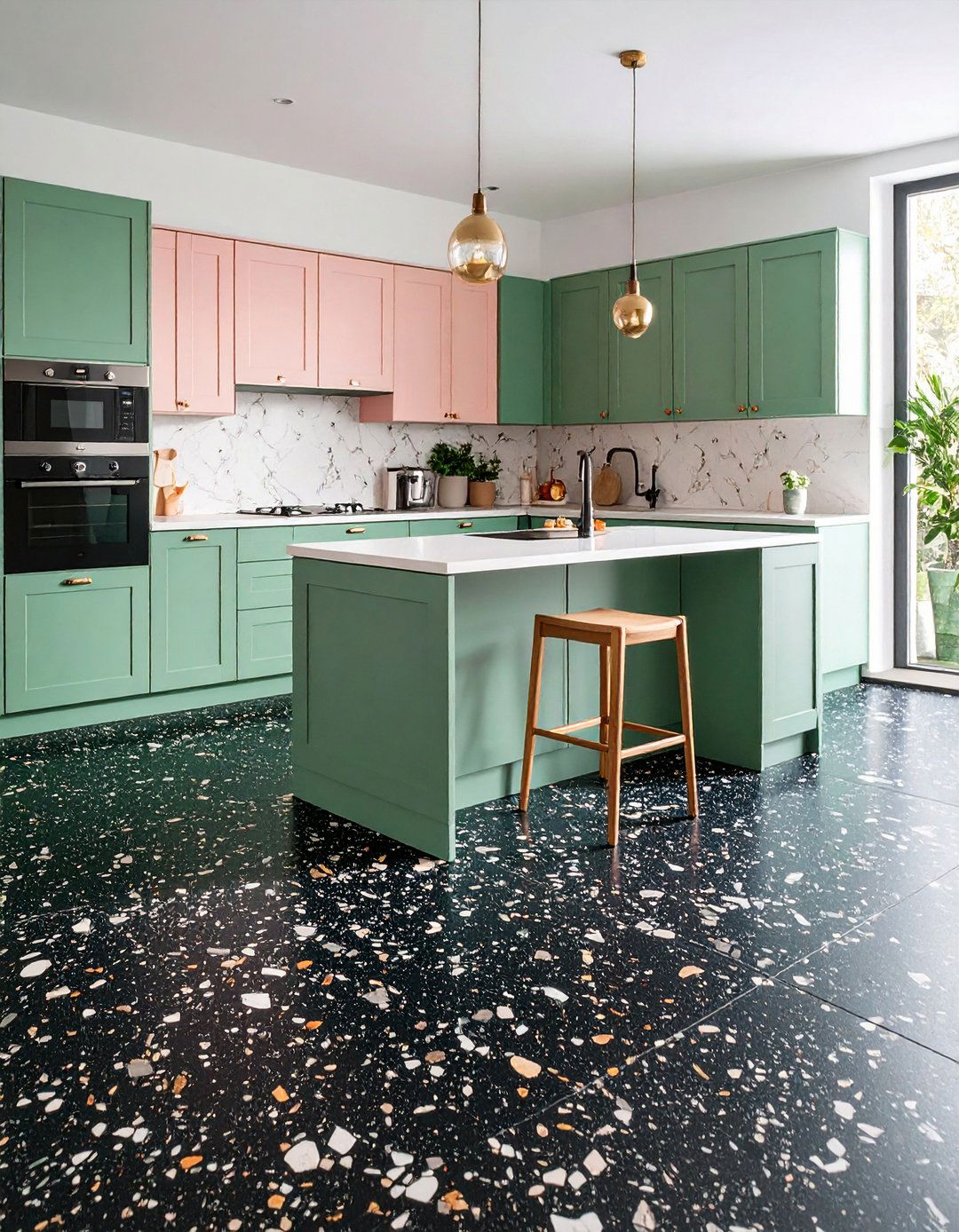
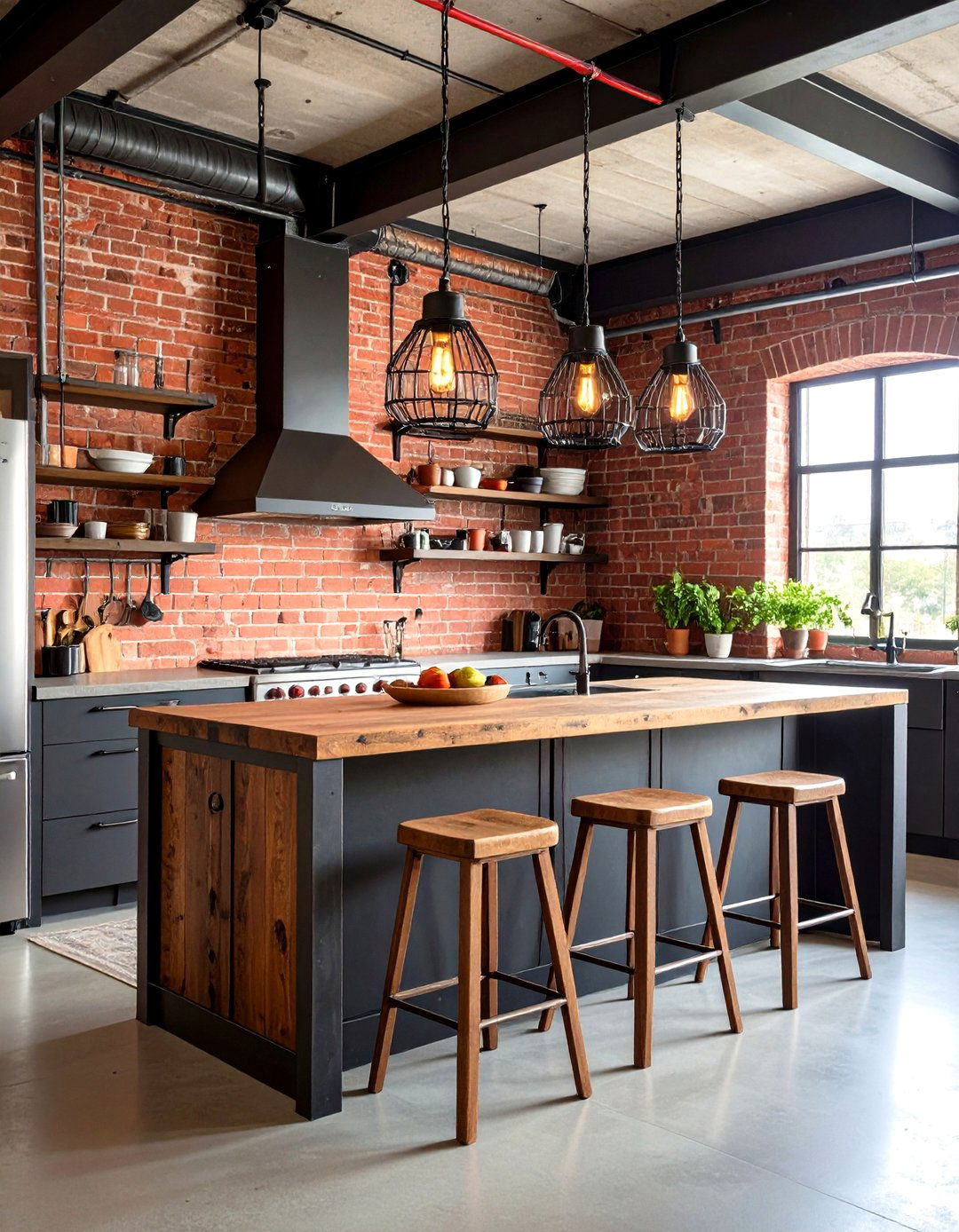
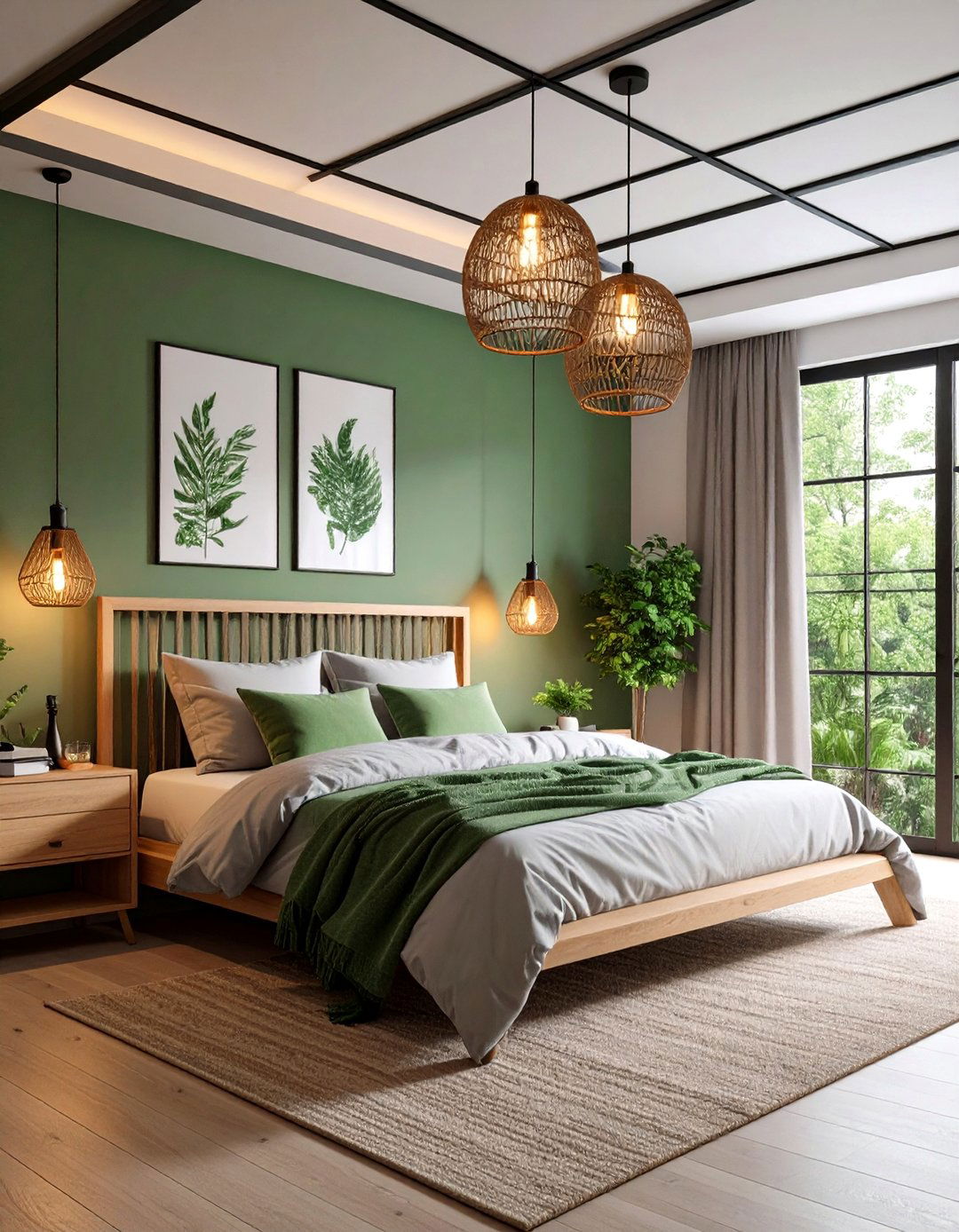
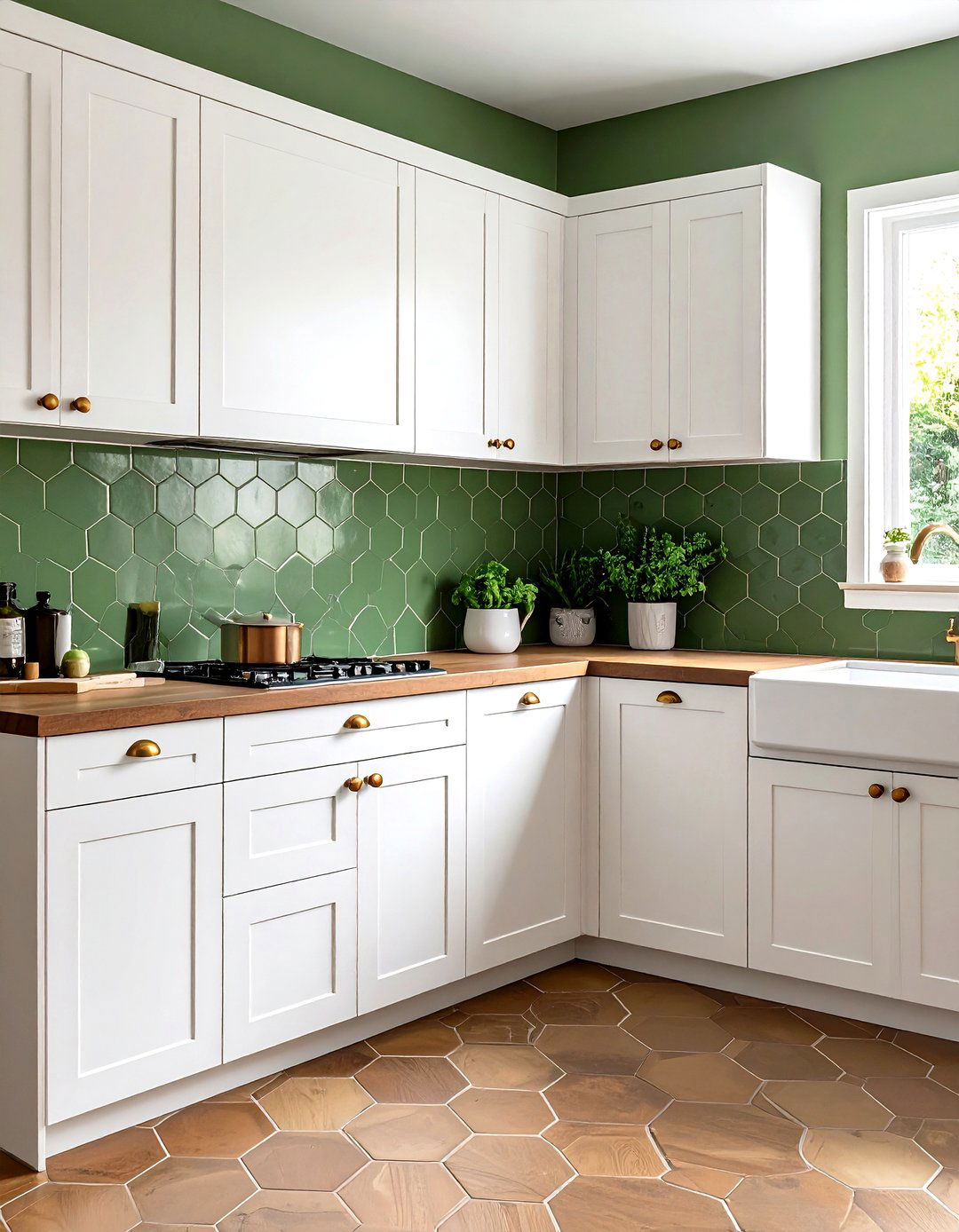
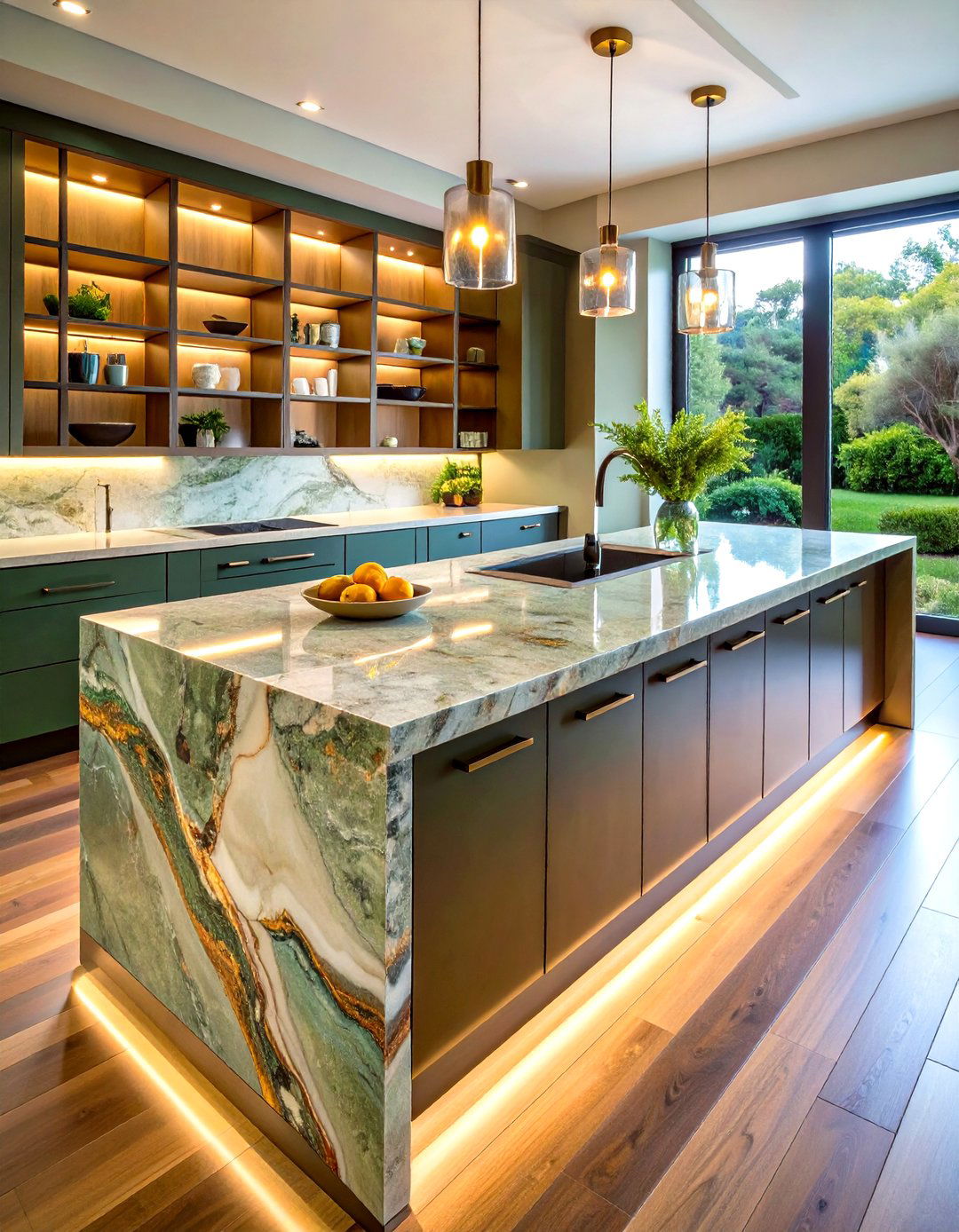

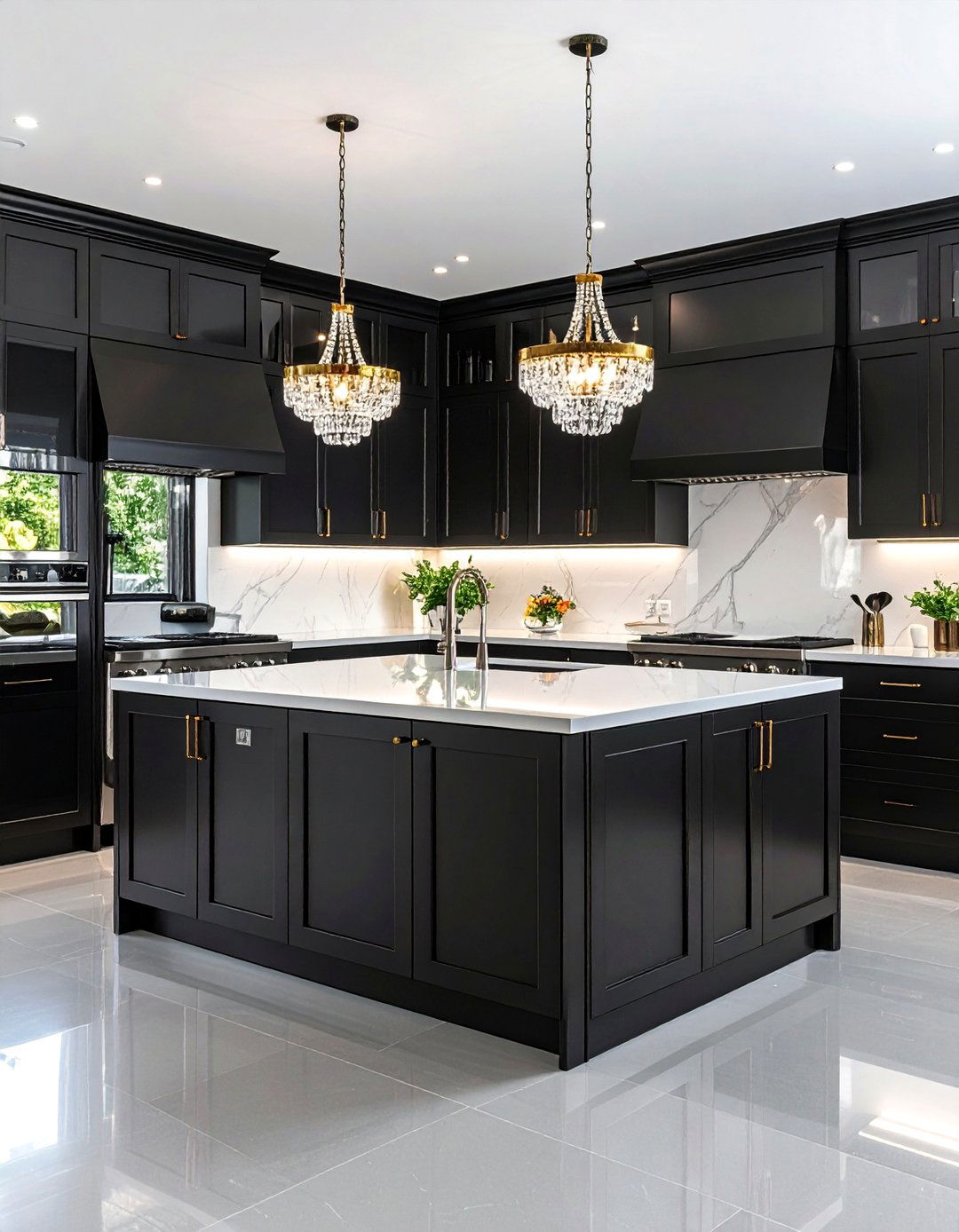

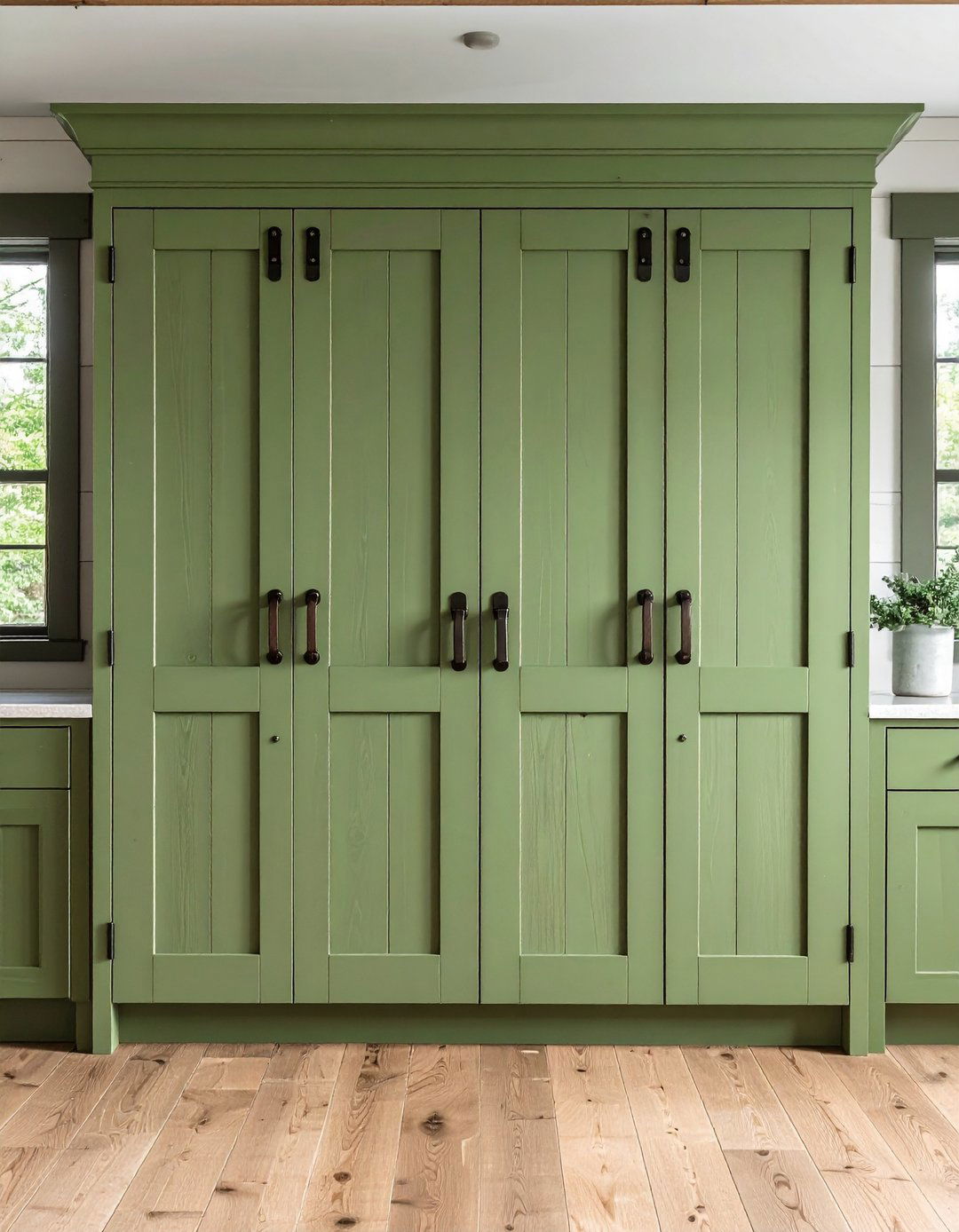
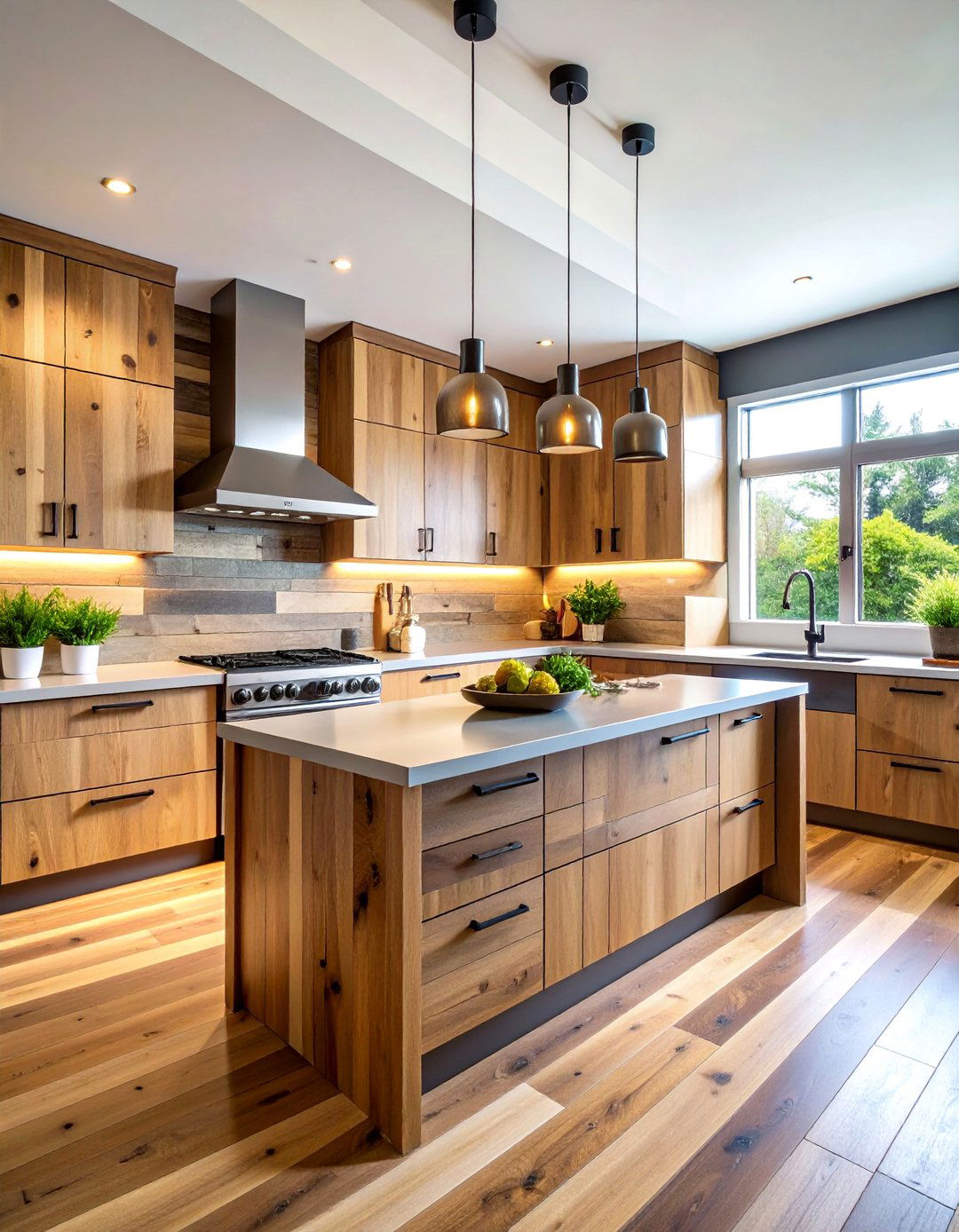
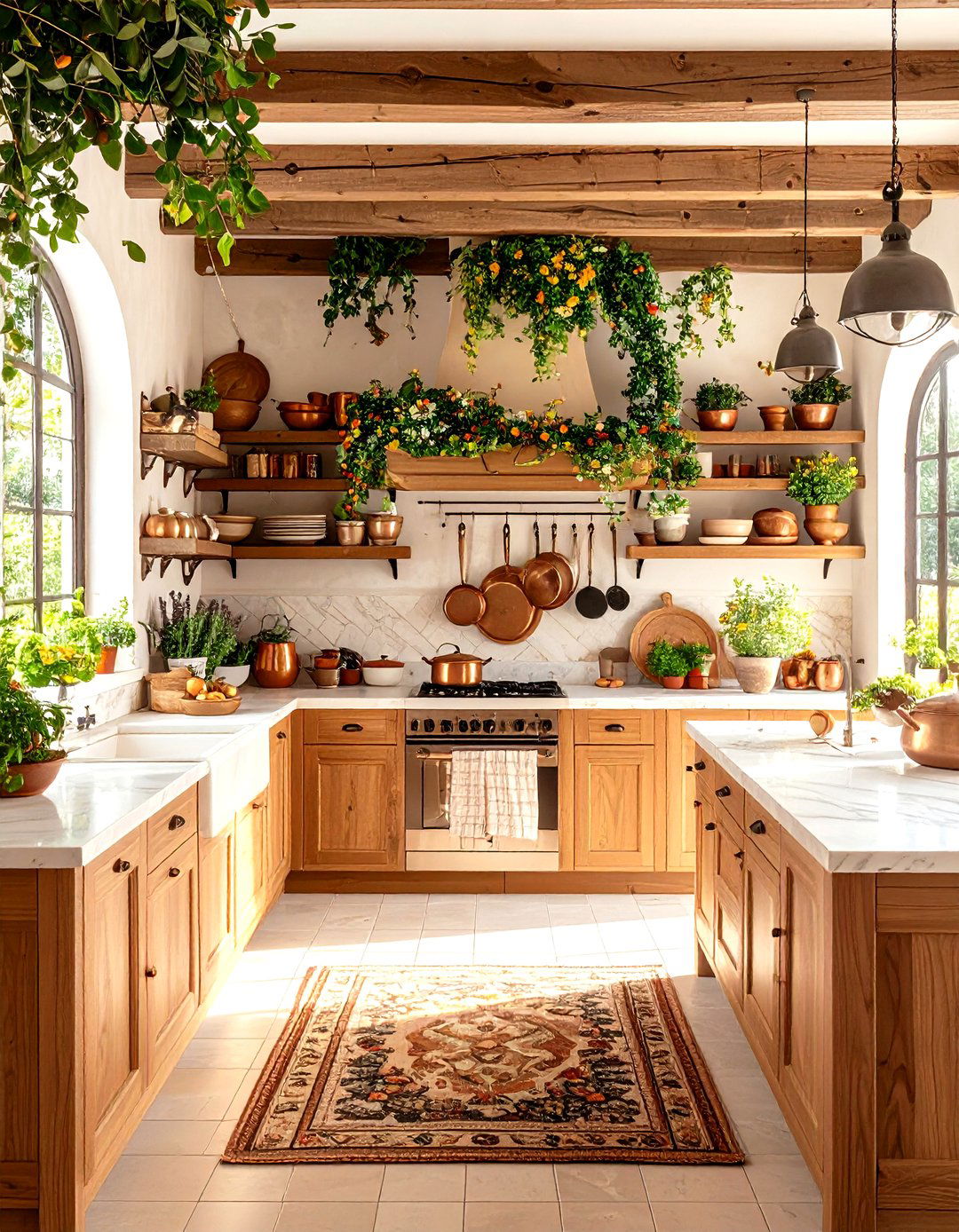
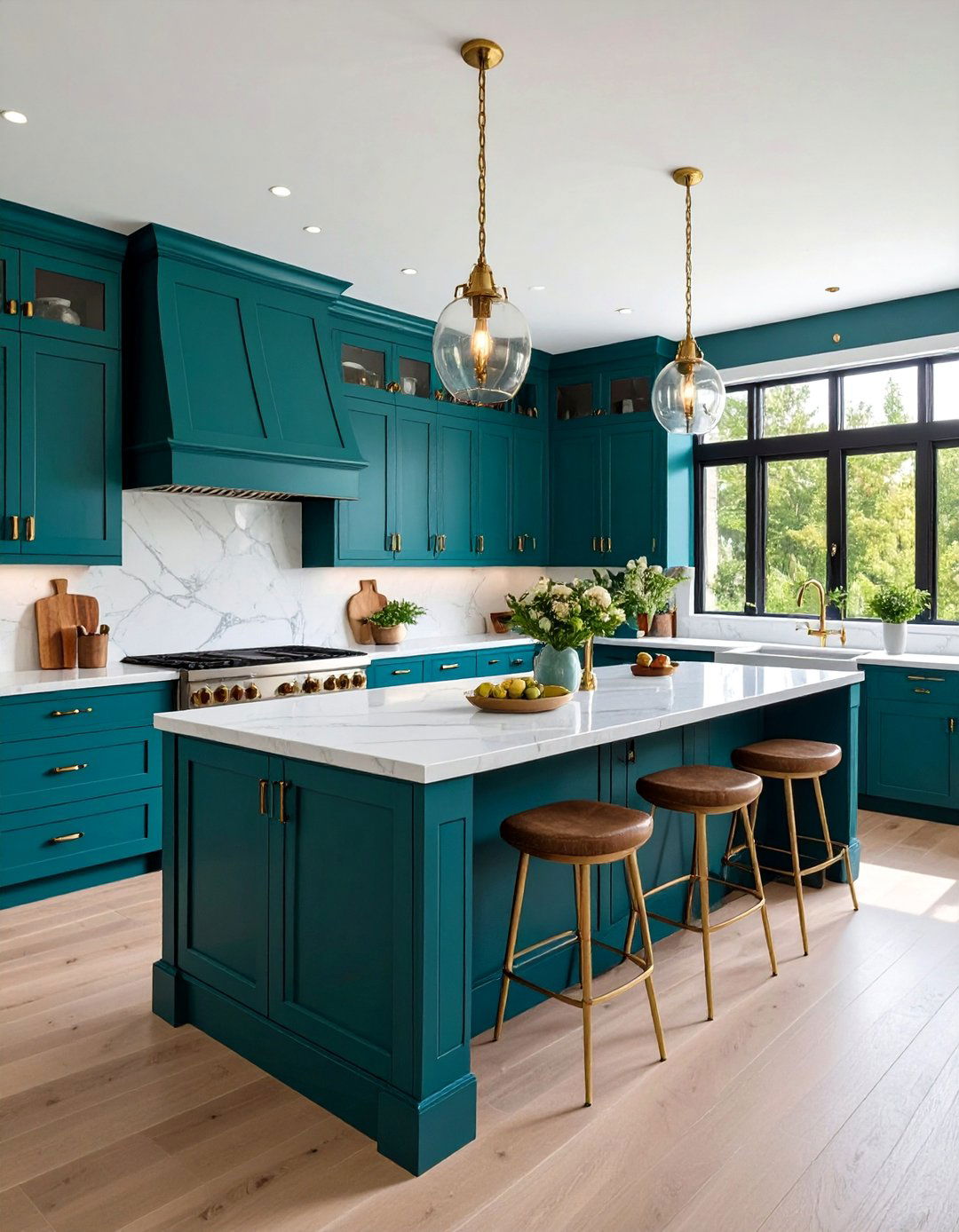
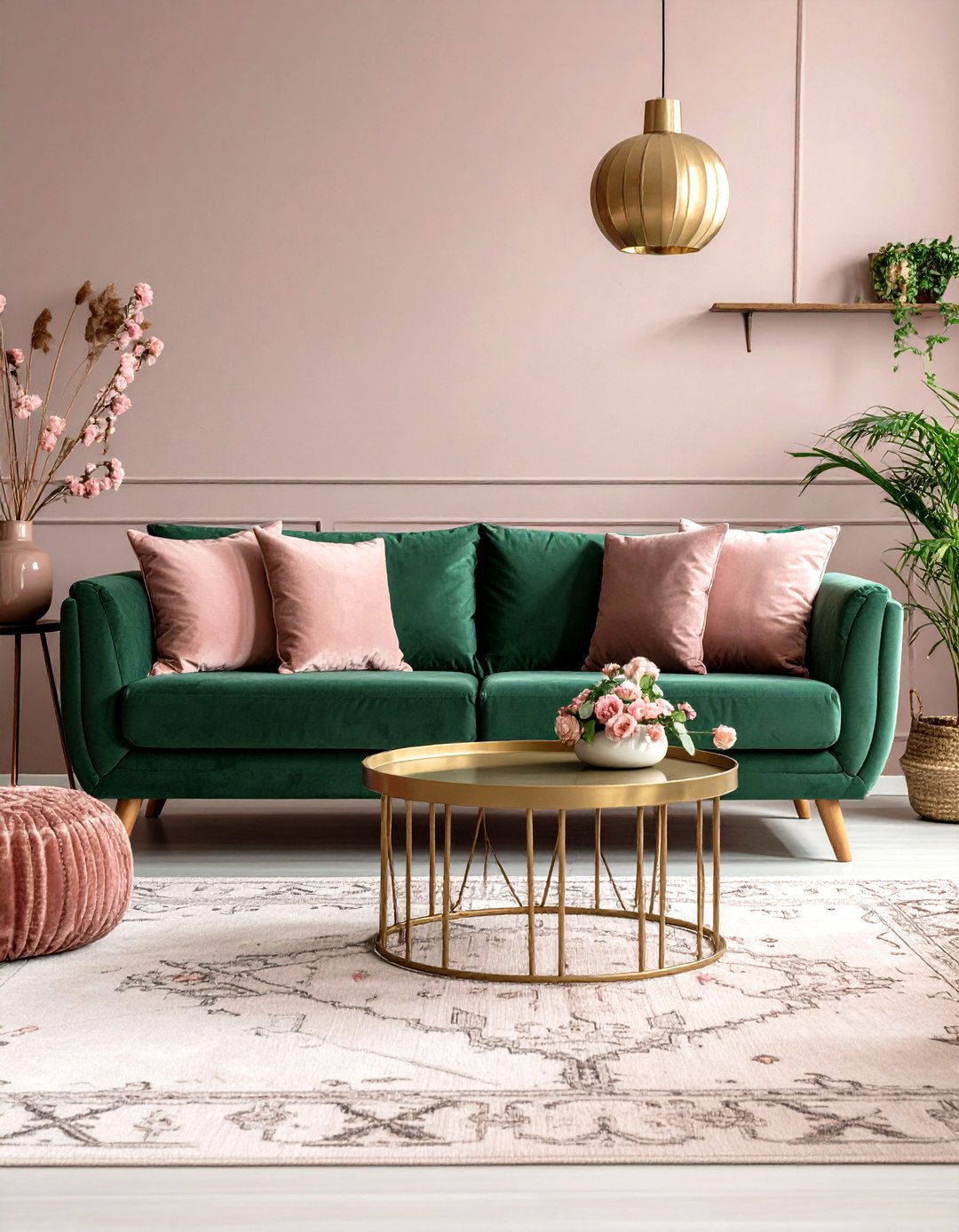
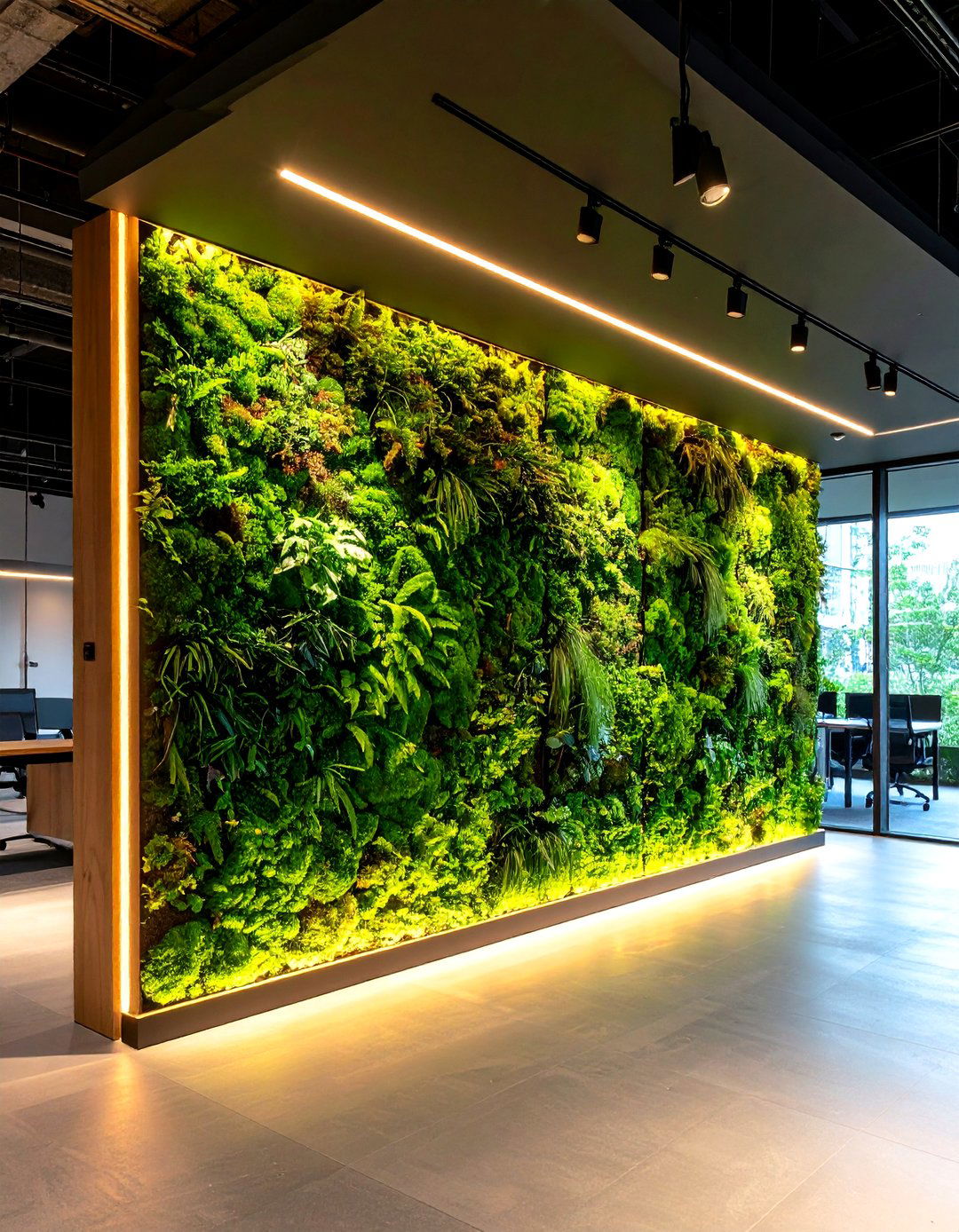
Leave a Reply